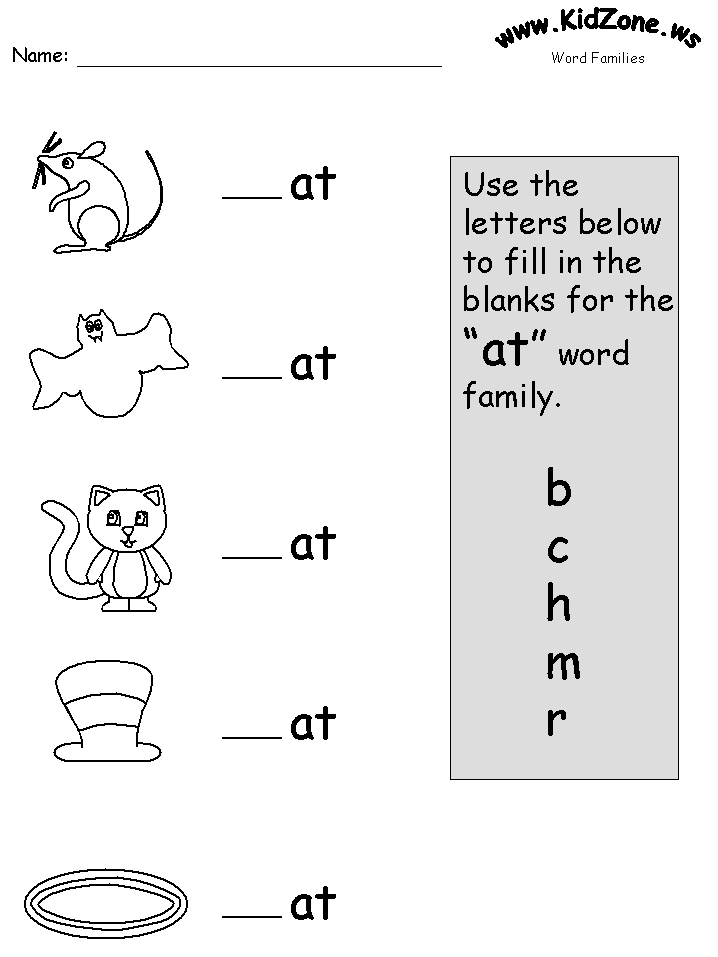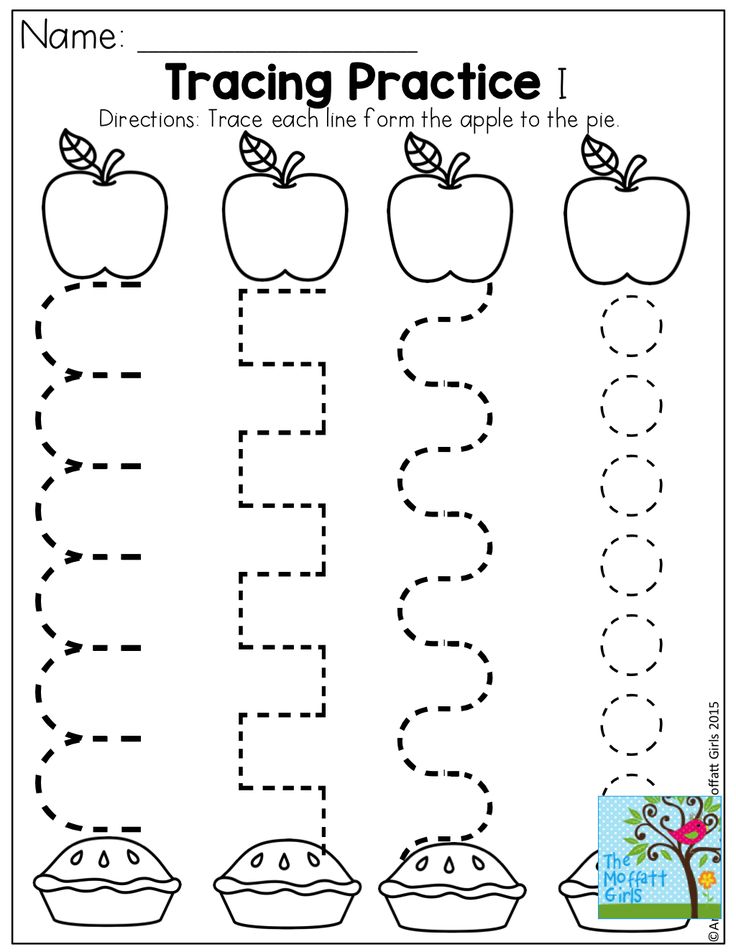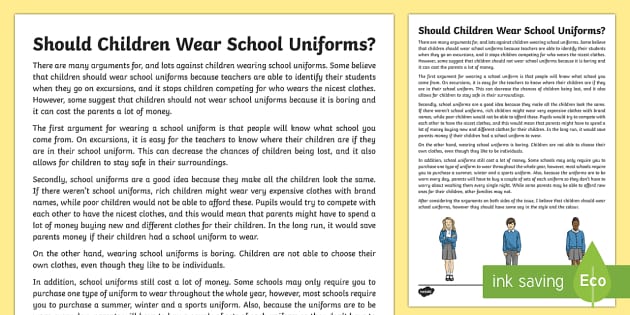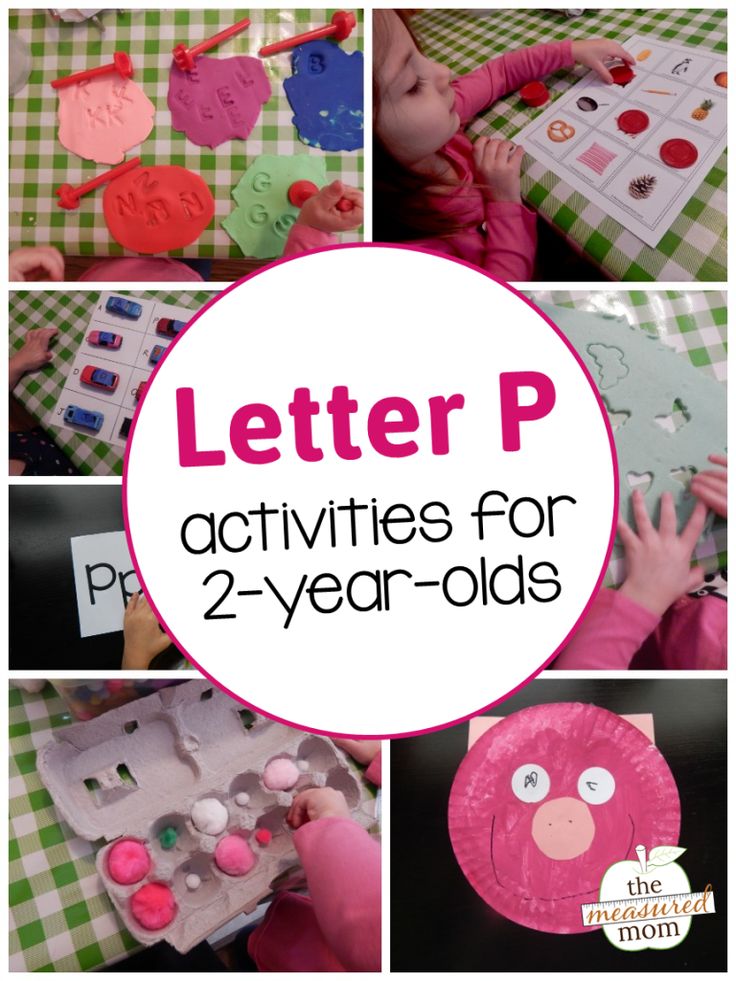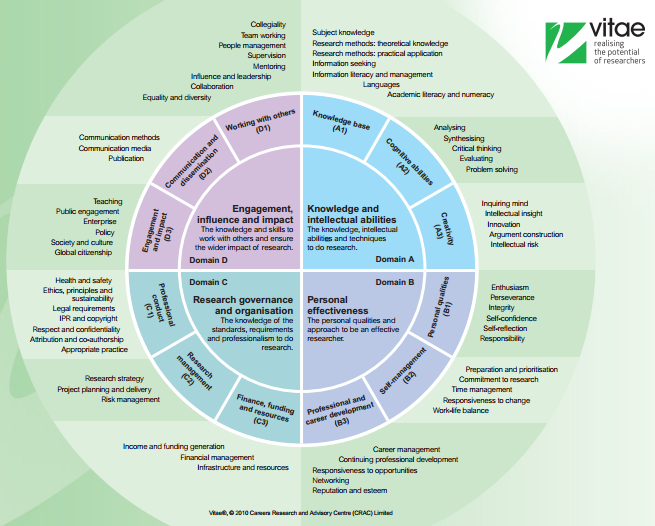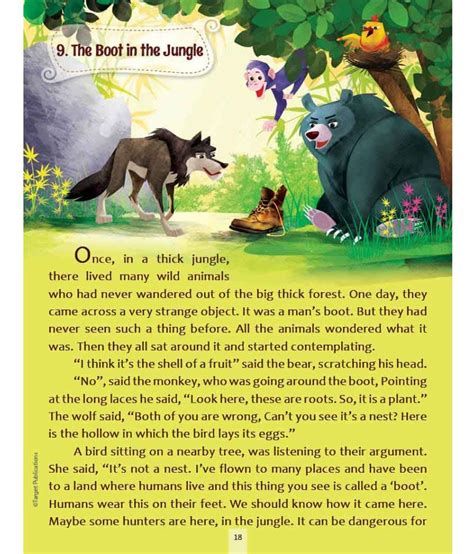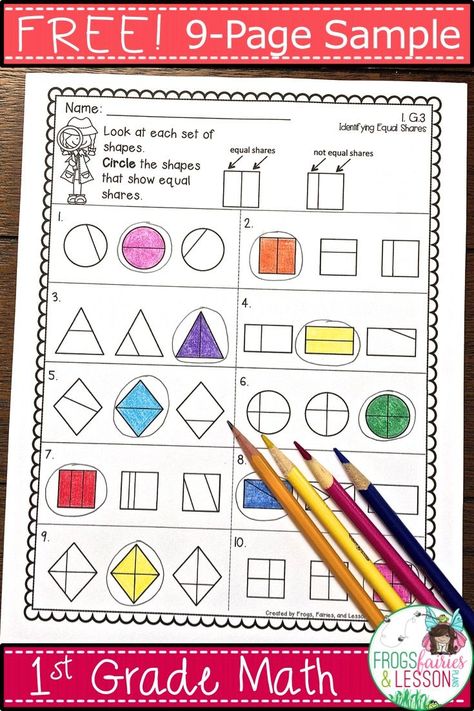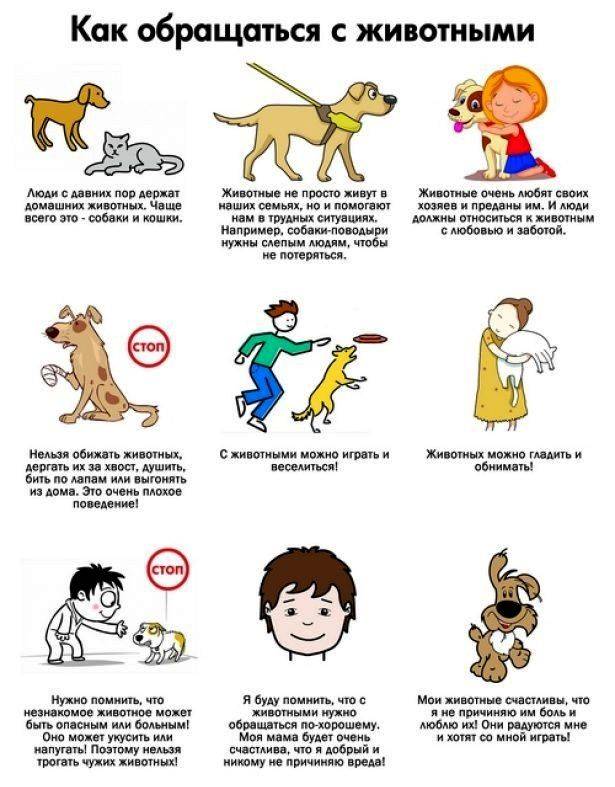Phonics for preschoolers
How To Teach Phonics To Preschoolers in 3 Simple Steps
14 shares
- Share
- Tweet
If you have a preschooler in your life, you’ve probably found yourself googling, “How can I teach my preschooler to read?” more than once.
Maybe you’ve even seen terms like “phonics” or “decoding” show up in the search results. Or maybe you’ve caught yourself scrolling Pinterest for hours looking for tips to teach your preschooler letters and sounds.
Teaching kids to read is a common concern for both parents and teachers, and rightfully so! Raising a strong reader is one of the most important things we can do for our little ones.
Although we want a fast, easy answer, teaching a child how to read is very complex. It takes years of systematic, explicit instruction before our kids become fluent readers who comprehend what they’re reading.
The good news is that we can lay the foundation while they’re still young to give them the best possible chance to be strong readers in the future!
In order to do that, let’s start with some basic literacy definitions that are important to understand. Then you’ll be on the right track for learning how to teach phonics to your preschooler.
Phonics and decoding are both essential parts of teaching a child to read. If you’re not too familiar with these common terms of early literacy, here is a brief review:
Phonics is a method of teaching reading by correlating sounds with letters or groups of letters in an alphabetic writing system. So, hearing a sound and knowing what letter made it.
Decoding is the ability to apply knowledge of letter-sound relationships to correctly pronounce written words. So, seeing a letter and knowing what sound it makes.
Phonics and decoding go hand-in-hand.
Let’s take the word BUS as an example.
When we teach our preschooler there’s a /b/ sound at the beginning of “bus,” and then we help them connect the /b/ sound with the letter b, we are teaching them phonics.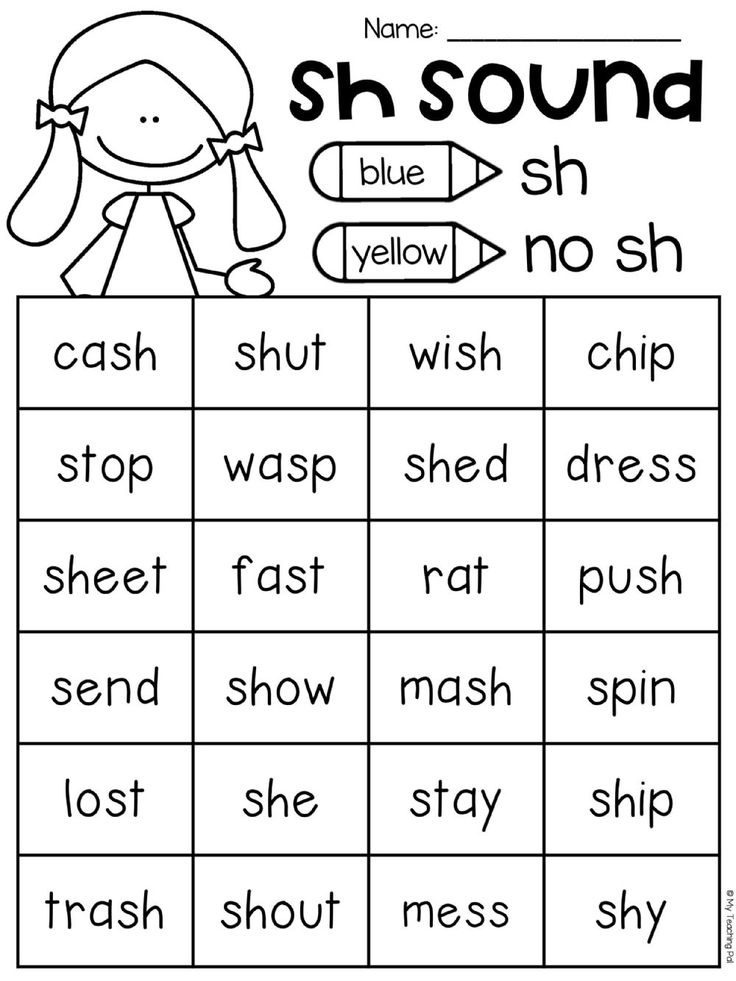
When they can look at the letters “b” “u” “s” and blend the sounds together /b/ /u/ /s/ to read the word “bus,” they are decoding.
Our preschoolers need to master the sounds of printed letters so that they can use that knowledge to decode words. Letter sounds are the building blocks of reading.
Related Post: 14 Simple Activities to Teach Preschoolers the Alphabet
Why Are Phonics So Important?
Many people believe that the best way to teach kids to read is via sight words, but phonics sets a strong foundation for the process of reading. Eventually, kids need to know more than just sight words; they must be able to decode new words as they see them.
That’s where phonics comes into play.
Throughout early childhood education, kids focus on phonological awareness and letter recognition. They learn the sounds each letter creates and how to blend simple words together. The goal is to build automaticity in their reading.
The Order to Teach Phonics to Preschoolers
There is a general order in which you should teach your child phonics.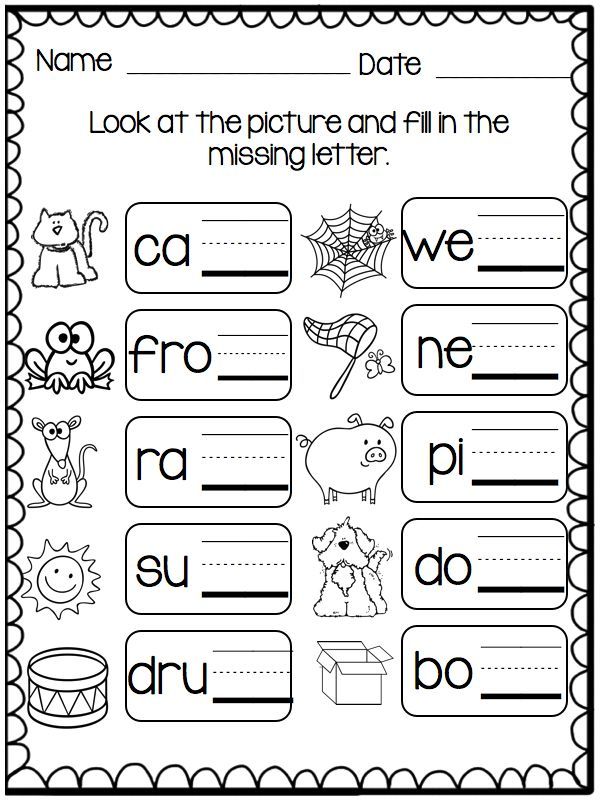 If you use a curriculum, you’ll notice that most are set out in this manner.
If you use a curriculum, you’ll notice that most are set out in this manner.
- Letter Sounds: Start with teaching your child the sounds of the letters. Kids are often taught the letters S, A, T, P, I, and N first, giving them a lot of words to sound out.
- Digraphs: Digraphs are two letters that make one sound, such as ch, th, sh, and wh. This is a great time to introduce words like wish, bath, and chip.
- Blending Sounds: After your child knows all of the individual sounds and digraphs, you start to move to blends for your child. Blends include bl, pl, st, sn, etc. These make up a huge portion of our language!
- Vowel Digraphs: Next, you’ll move on to vowel digraphs, such as ae, oo, and ai. Your child will learn how to sound out words like hair and moon.
How to Teach Phonics to a Preschooler
If your preschooler is ready to begin the process of learning to read, here are 3 steps you can follow to help set them up for success with phonics and decoding:
STEP 1: Start with Sounds (Phonemic Awareness)Let’s take one step back…
Before we ever introduce printed letters to our kids, we want them to know that English is a language of speech sounds.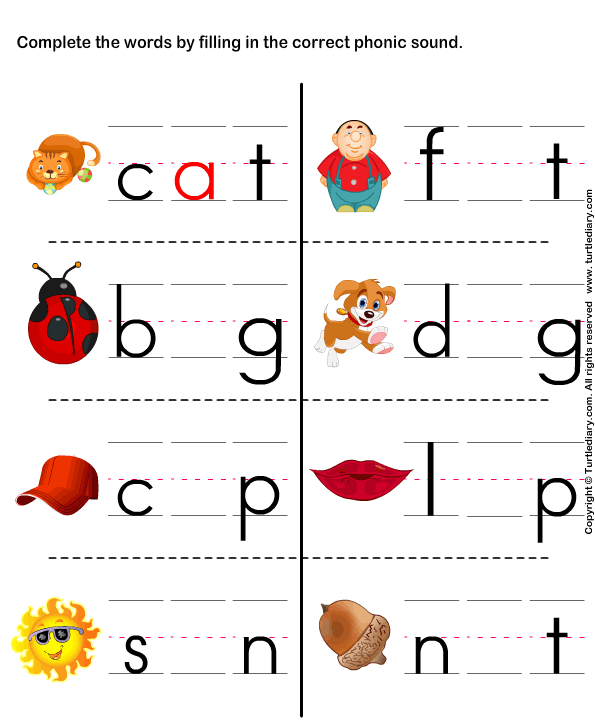 There are 44 speech sounds (phonemes) in the English language that are represented by 26 letters.
There are 44 speech sounds (phonemes) in the English language that are represented by 26 letters.
If you’re not sure what the 44 sounds are, click here for an easy-to-read chart.
When we speak, we put those speech sounds together to make words. To represent those words on paper, we pair them with letters.
When it comes to reading, we want our kids to first understand speech sounds before they ever get to the printed letters that represent those sounds.
Tuning into the sounds of English (phonemes) helps our preschoolers develop phonemic awareness.
Phonemic Awareness refers to the specific ability to identify and manipulate the 44 phonemes in spoken words.
Phonemic awareness is one of the best predictors of how well our kids will learn to read during the first two years of school.
Ideas to practice phonemic awareness (you don’t need any supplies for these games):
- Slow-Fast: Say a word slowly, and then have your preschooler say it fast.
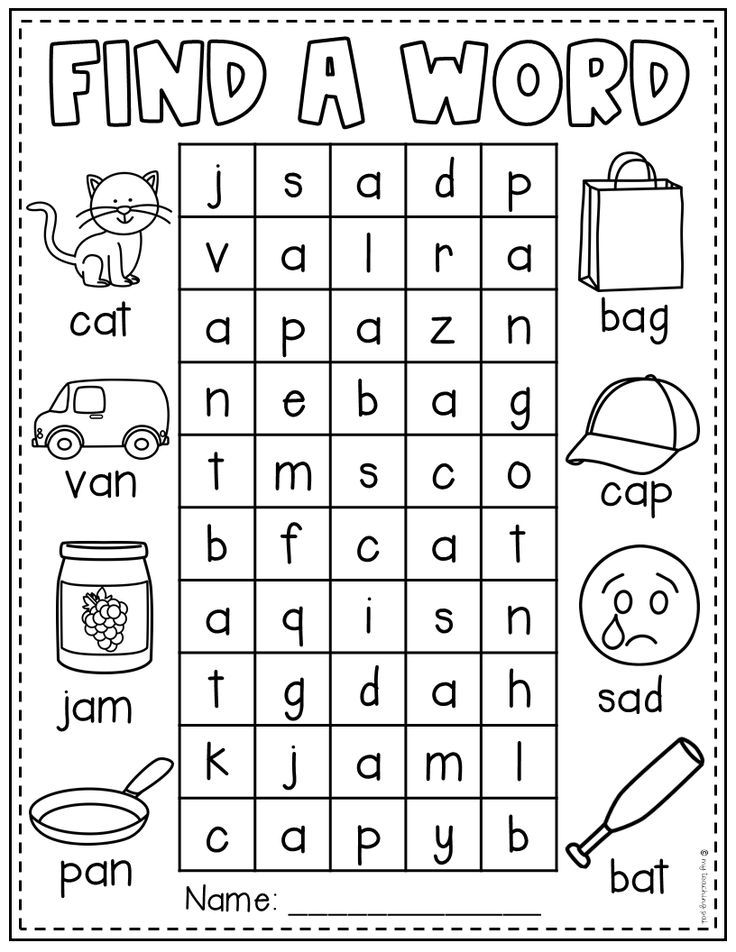
- You say /c/ /a/ /t/ slowly and they say “cat.”
- You say /s/ /i/ /p/ slowly and they say “sip.”
- Isolate the Sound: Have them tell you the beginning, ending, or middle sound of a word (not the letters, just the sounds).
- “What’s the first sound in the word caterpillar?” /k/
- “What’s the last sound in the word cheese?” /z/
- “What’s the middle sound in the word pop?” /o/
- Change the Beginning Sound: Say a word but change the beginning sound to make it silly.
- “Would you like a baffle?” (instead of waffle)
- See if they can guess the word it was supposed to be.
- Count the Sounds: Give them a word, and have them count the sounds (not the letters, just the sounds).
- “How many sounds in the word apple?” /a/ /p/ /l/ = 3 sounds
- “How many sounds in the word wish?” /w/ /i/ /sh/ = 3 sounds
- Same or Different: Determine if words have the same beginning sound or not.

- “Do “duck” and “dog” start with the same sound?” Yes
- “Do “fish” and “box” start with the same sound?” No
If you want to get the most bang for your buck when it comes to teaching your preschooler to read, THIS is the area to spend the majority of your time!
Related Post: Letter T Printables
STEP 2: Introduce Printed Letters (Phonics)Now it’s time to teach your preschooler phonics. You’ll want to start by introducing your little one to the 26 letters of the alphabet.
Since you started with Step 1 and focused on sounds, Step 2 will be a lot easier because they’ll be linking something new (printed letters on paper) with something they already know (speech sounds).
If we try to link something new (printed letters on paper) with something they don’t know (speech sounds), they’re going to be lost and struggle to remember these concepts.
A few DOs and DON’Ts when introducing printed letters to your preschooler:
- DO teach the uppercase and lowercase letters at the same time.
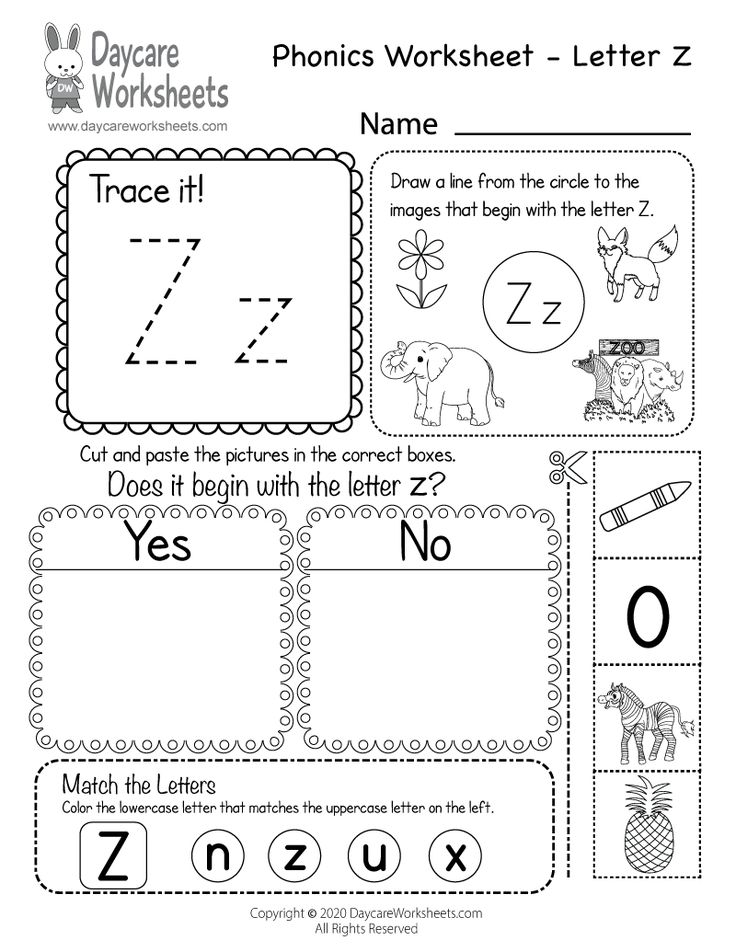
- Uppercase letters will be easier for them to write.
- Lowercase letters will be what they see most often in books.
- They need to know both.
Related Post: Fishing for Letters Sensory Activity
- DON’T do Letter of the Week.
- This is an outdated practice that doesn’t help with retention of the alphabet.
- Stick with 3-5 letters at a time to work on as a group. See the reasons in this book here.
- DO Stick with the most common sound of each letter. A few to look out for when choosing alphabet cards and books:
- C is for the beginning sound in caterpillar, not city
- G is for the beginning sound in gorilla, not giraffe
- X is for the last sound in fox, not the beginning sound in xylophone or x-ray
- Don’t choose words with digraphs
- S is NOT the first sound in shell
- C is NOT the first sound in chat
- DON’T teach letters in ABC order.

- There are many different orders you can teach letters in. Here’s one example that’s very effective as these are grouped by common letters used most often in the English language. I like to group letters together and work on one group at a time:
- s, a, t, i, p, n
- c, k, e, h, r
- m, d, g, o
- l, f, b, q, u
- j, z, w
- v, y, x
- Then I introduce the digraphs sh, ch, th, and wh.
- There are many different orders you can teach letters in. Here’s one example that’s very effective as these are grouped by common letters used most often in the English language. I like to group letters together and work on one group at a time:
Related Post: Letter O Printables
- DO Stick with short vowels.
- Vowels make both long and short sounds, but when teaching preschoolers, it’s important to stick with the short vowel sounds.
- A = apple (not acorn)
- E = Ed (not eat)
- I = itch (not ice cream)
- O = octopus (not open)
- U = umbrella (not unicorn)
- You’ll also want to look out for any vowels that have the letter R after them, as this will change the sound.
- Don’t use “orange” for short vowel o.
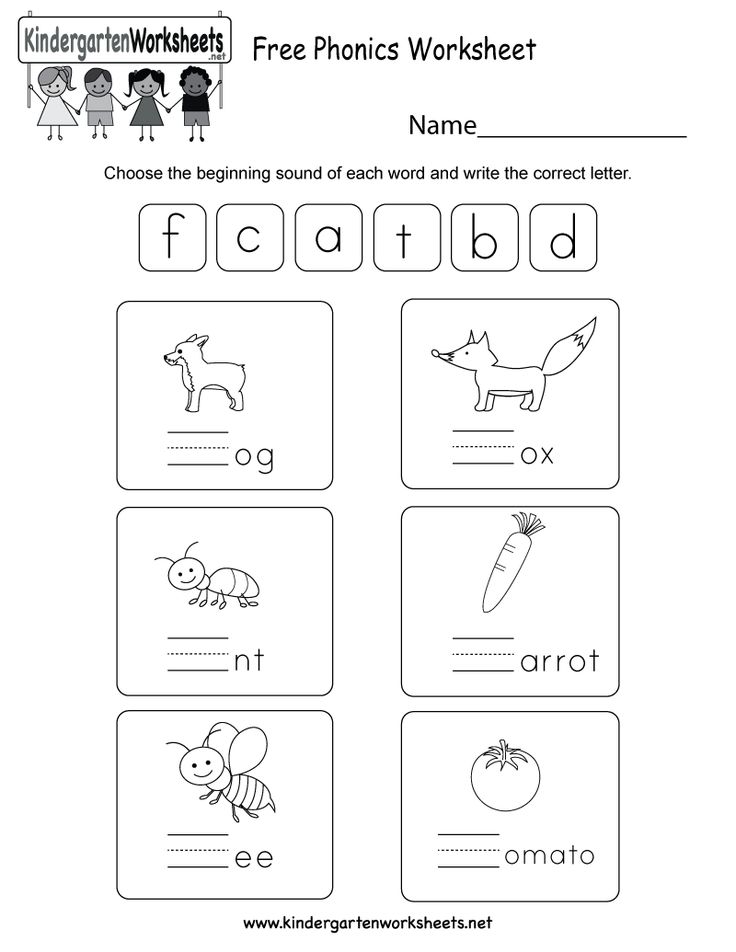 The letters “o” and “r” at the beginning of the word say “or” together.
The letters “o” and “r” at the beginning of the word say “or” together.
- Don’t use “orange” for short vowel o.
- Vowels make both long and short sounds, but when teaching preschoolers, it’s important to stick with the short vowel sounds.
- DON’T teach all of the letters before going to Step 3.
- If you follow the order I suggested, you can actually go to Step 3 sooner!
- DO use LOTS of multisensory techniques when working with letters.
- Make sure to incorporate LOTS of hands-on play and movement.
- Use sensory bins that engage multiple senses.
- Incorporate different themes or topics that interest your preschooler to keep them excited.
- Use fun, multi-sensory activities like erasing letters on a dry erase board or using stickers to fill in a letter.
Now here’s where you can see Step 1 and Step 2 paying off.
If you played with sounds in Step 1, your little one will be more comfortable blending sounds together.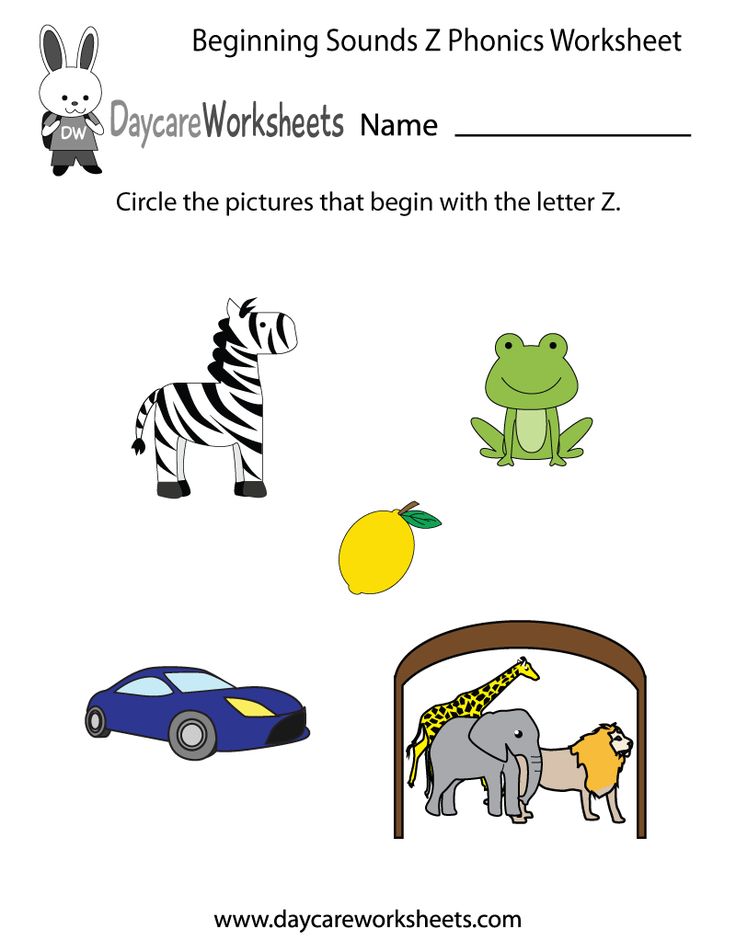
If you introduced the letters in a specific order in Step 2, you can make LOTS of words without having to go through the entire alphabet.
- Just from the first 6 letters (SATIPN), you can make words like:
- sat, sit, pin, nip, nat, tan, tap, pan, tip, nap, and MORE!
Learning to read is complex and takes many years of instruction. English is a complicated code, and we want to give our little ones the tools to break that code so they are confident, successful readers.
Now that you know how to teach phonics to preschoolers, you can start laying the foundation NOW. By following these 3 steps, you’re sure to watch your preschoolers bloom into strong readers in the future.
Related Post: Free Flower Letter Tracing Printables
5 Tips for Teaching Phonics to Preschoolers
Now that you know the steps, it shouldn’t seem as intimidating. One thing to keep in mind is that these steps take plenty of time.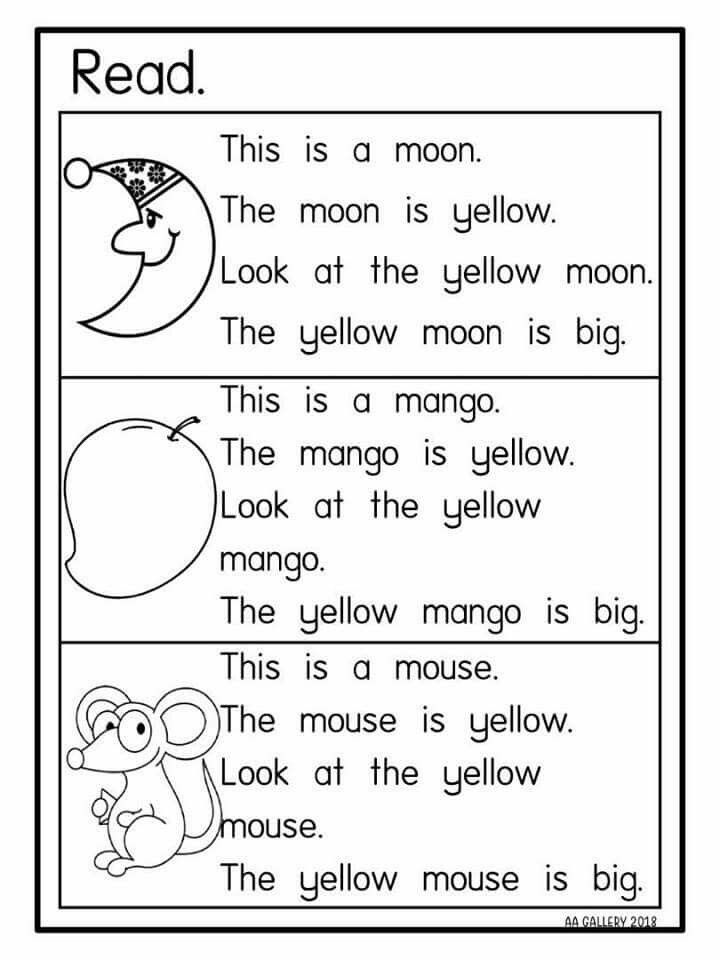 At times, it may feel frustrating, so here are some tips to increase your likelihood of success and fewer tears.
At times, it may feel frustrating, so here are some tips to increase your likelihood of success and fewer tears.
Give Your Child Plenty of Practice
Kids need frequent opportunities to practice and apply the knowledge they learned. They need to apply this phonetic knowledge to both reading and writing activities.
Don’t be afraid to give them plenty of practice!
Whether you find some fun games to play with your kids or give them some worksheets to complete, the more practice they have, the better it is.
Try Phonic Clips Cards
Clip cards are a great, non-permanent way to teach your child how to distinguish letter sounds. Your child looks at the picture, says what it is out loud, such as the moon, and determines the beginning sound.
Then, they use a clothespin and clip the beginning sound on the card. Kids love the kinetic part of this; using clothespins is fun!
Related: Christmas Beginning Letter Sound Clips: Free Printables
Be Flexible with Your Instruction
Each child is unique, so it’s important to be flexible whether you are a parent or a teacher.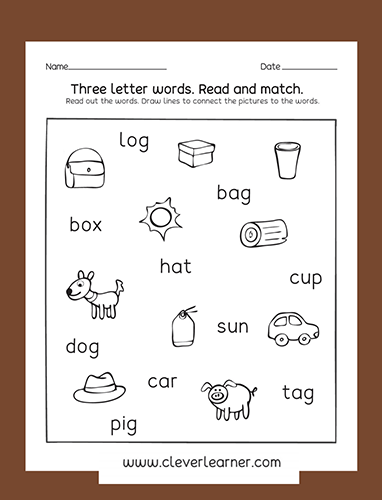 All kids learn differently; some are auditory learners, while others are kinetic learners.
All kids learn differently; some are auditory learners, while others are kinetic learners.
Be versatile and use different methods of instruction. Observe the most effective lessons and tailor your instruction to meet your child’s needs.
Learn about Orton-Gillingham’s method of reading; this is a multi-sensory approach to learning how to read. It offers a variety of activities and brings in auditory, visual, and kinetic ways of learning.
Don’t Just Focus Solely on Phonics
In general, kids need a complete literacy program. You don’t want to solely focus on phonics for kids. They should be learning new vocabulary and working on reading comprehension.
One of the best things you can do for kids is to read to them daily. Pick up several books each day and read them to your child. Ask your child questions about the book to work on reading comprehension as you read. They naturally learn new vocabulary through new books.
Incorporate Writing As Well
Kids should begin to learn how to write the letters they learn to read simultaneously.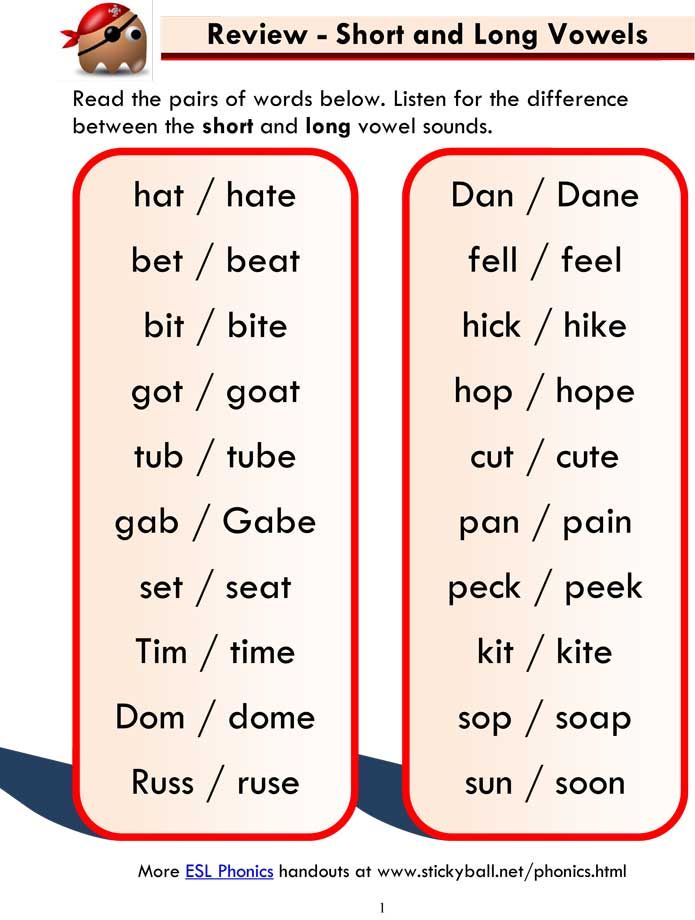 Start by focusing on correct letter formation.
Start by focusing on correct letter formation.
Use a multisensory approach to teaching letter formations. Here are a few ideas!
- Write letters in the air as they say the sounds – do it three times!
- Write on sand or salt trays.
- Form letters with Play-Doh
- Build letters with blocks or popsicle sticks
- Use a dry-erase marker and board for repeated practice
Erin from Littles Love Learning
Erin is a wife, mom, and preschool teacher with a master’s degree in Early Childhood Education & an endorsement in Reading. She is the founder of Littles Love Learning, where she shares hands-on learning activities that are based on early learning standards and rooted in PLAY! Her passion is equipping preschool parents & teachers with the tools to teach foundational skills so their little ones have success in kindergarten and beyond. Connect with Erin on social media:
- Instagram: @littleslovelearningblog
- Facebook: Littles Love Learning Blog
- Pinterest: Littles Love Learning Blog
Related posts:
14 Phenomenal Phonics Activities for Preschoolers
It’s difficult to overstate how important reading and language are.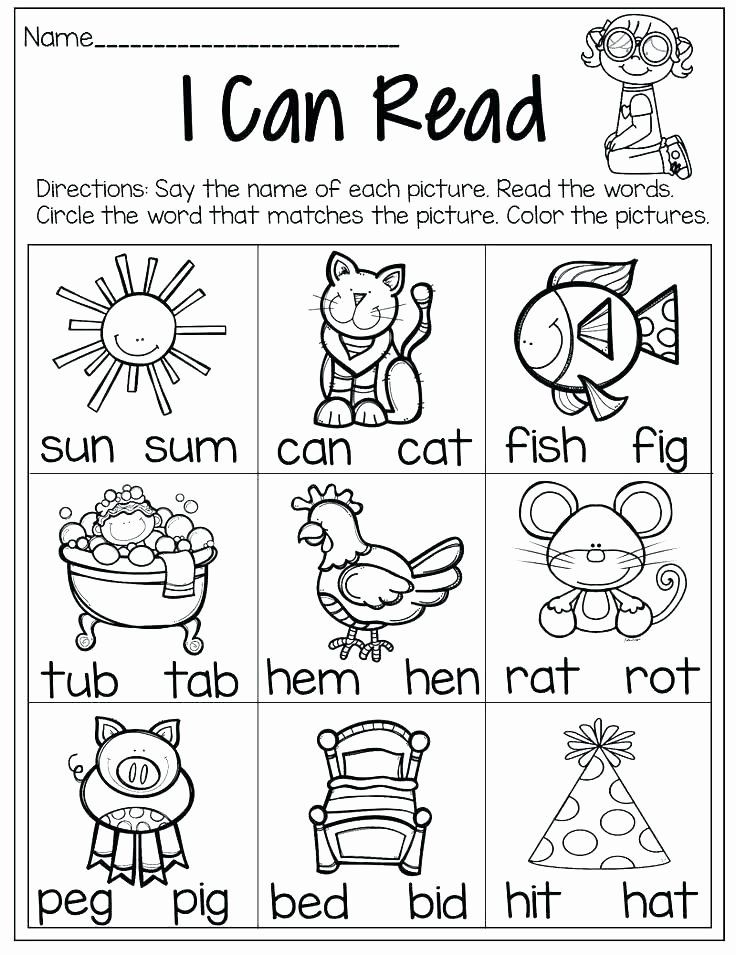 These skills are the foundation for a lifetime of success, so it’s only natural if you’re seeking out ways to make sure the little ones in your care are on solid ground. One tried-and-true method for building literacy skills is through the use of phonics activities. In this article we’ll help explain what phonics are and share some excellent phonics activities we’ve found from preschool professionals.
These skills are the foundation for a lifetime of success, so it’s only natural if you’re seeking out ways to make sure the little ones in your care are on solid ground. One tried-and-true method for building literacy skills is through the use of phonics activities. In this article we’ll help explain what phonics are and share some excellent phonics activities we’ve found from preschool professionals.
What are phonics?
It’s pretty simple—phonics are just the relationships between letters and the sounds they make. For instance, the letter “p” sounds like /p/ and the letter combination of “tion” sounds /shun/. Though letter combinations like “tion” are more complex, preschoolers can get started learning to recognize simpler letter sounds.
Learning phonics will help young kids decode words to learn how they’re pronounced and what they mean. This will give them a leg up on writing and spelling. Normally learned between kindergarten and second grade, phonics activities are available for every age, including remarkably simple and amusing options for you and your child.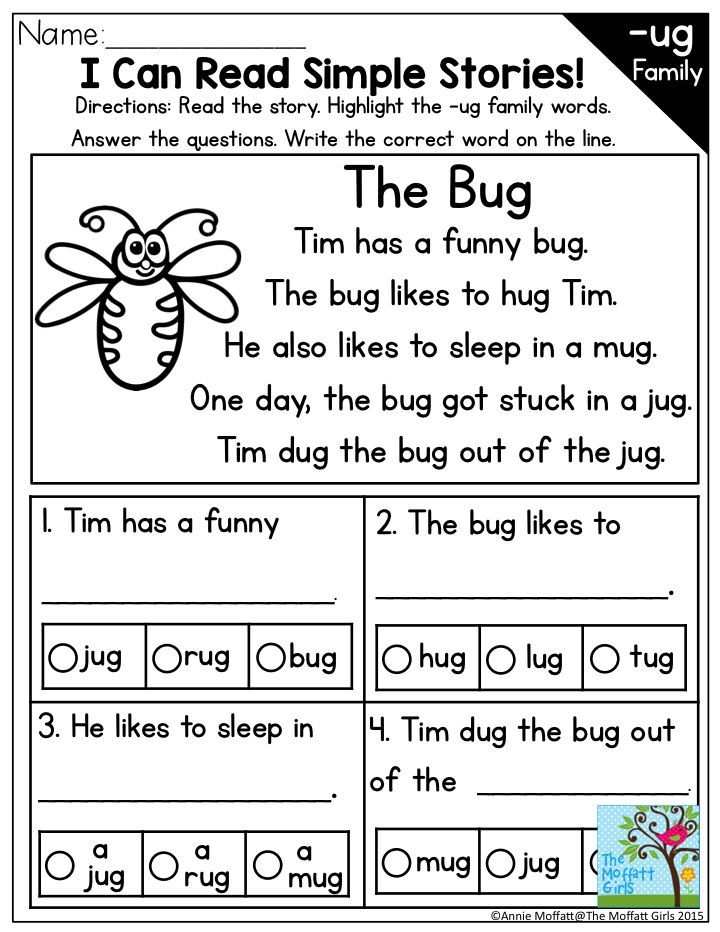 We’ve gathered the best on the web just for you and your preschooler.
We’ve gathered the best on the web just for you and your preschooler.
14 Fun phonics activities for preschoolers
1. Rainbow hop letter sounds game
This kinetic phonics game from Fun Learning for Kids transforms your living room into a life-sized board game. Simply use colored paper, one die and a marker to create a stepping-stone for every letter of the alphabet or however many you have room for. You can even include “ch” and “sh” pieces for more advanced learners. For the game, your child will roll the die, take the allotted number of hops and say and pronounce the letter that they land on. Perfect for playing with siblings or parents or friends, this active game will help your little one learn both letter sounds and counting.
2. Alphabet ball
Best played outside or in a gym, this super simple active game from Hands On As We Grow will keep your energetic preschooler moving, grooving and learning. First, the adult calls out a letter and the child responds with a word that begins with that letter.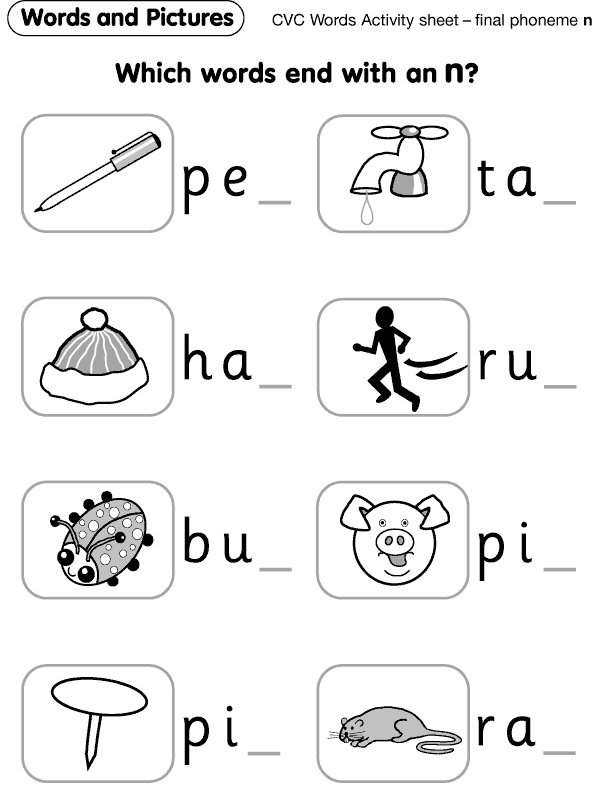 Then, the adult throws the ball to the child and the child gives the adult a letter to find a word for, and on and on. You can make the game even more fun by kicking the ball or chasing each other to tag with the ball. You can also play rhyming ball, where the thrower provides a word for the catcher to rhyme with.
Then, the adult throws the ball to the child and the child gives the adult a letter to find a word for, and on and on. You can make the game even more fun by kicking the ball or chasing each other to tag with the ball. You can also play rhyming ball, where the thrower provides a word for the catcher to rhyme with.
3. Alphabet phonics clip cards
You can download these free, fun and easily portable phonics clip cards from Kids Activities. Using clothespins or any other kind of nonpermanent marker, your child will mark which animal name starts with the letter “z,” “b” or “s” depending on the card. These colorful cards enable your child to work on word association and sounds while in the car, waiting at the doctor’s office or relaxing at home.
4. Letter sounds race
This Letter Sounds Race from Inspiration Laboratories is perfect for your little sprinter. Place letter magnet opposite any magnetic surface—magnet board, the fridge or easel. While your kiddo stands near the magnet board, pronounce a letter sound, have them run to the letter magnets, pick out the corresponding letter and place it on the magnet board.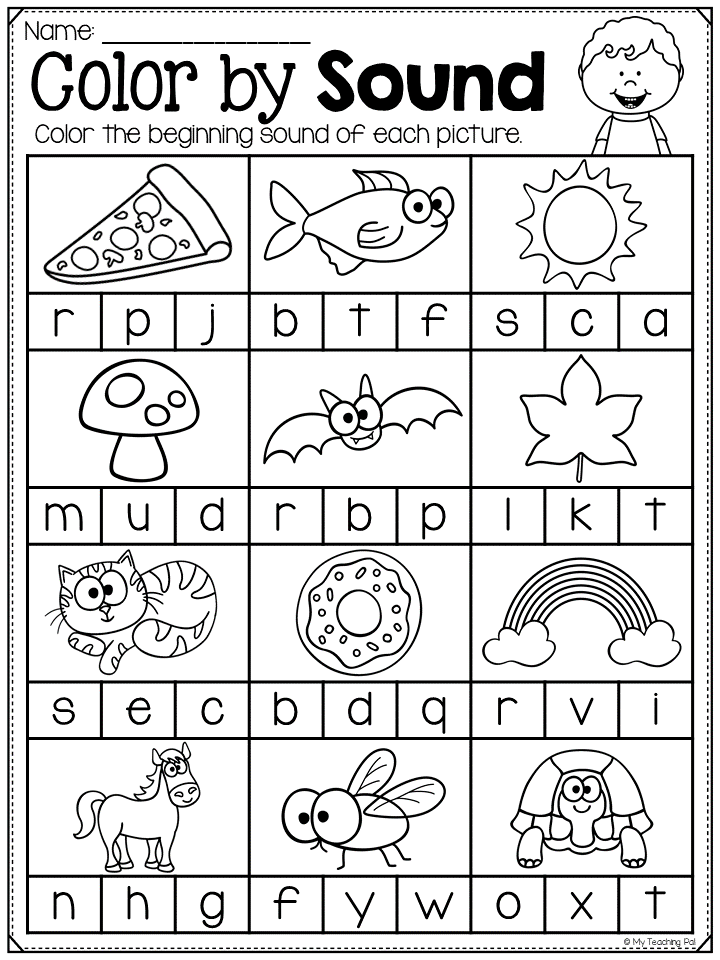 You can help your younger child learn new letter sounds by asking them to find and place the letter, pronounce the letter sound and ask them to repeat it.
You can help your younger child learn new letter sounds by asking them to find and place the letter, pronounce the letter sound and ask them to repeat it.
5. Phonic photo scavenger hunt
Get clicking with this bright idea from VeryWell Family. Have your preschooler create a photo album, either physical or digital, with a photo of an item for every letter sound: “a” for anthill to “z” for zoo. This is an easy way to keep the learning flowing while on vacation or on the go. This can be done again and again to learn new sounds like “ch” or “sh.”
6. Spin & rhyme
No Time For Flash Cards suggests a creative alternative to boring work sheets. Use a paper towel roll and clothes hanger to easily create rhyming words (e.g., cat, pat, mat, sat). This exercise also helps your little one learn how to break down words and identify word families. The simple setup is easy to transport and provides a kinetic twist to a basic phonics activity.
7. Erase the sound
Your little artist will love this simple and visually stimulating activity.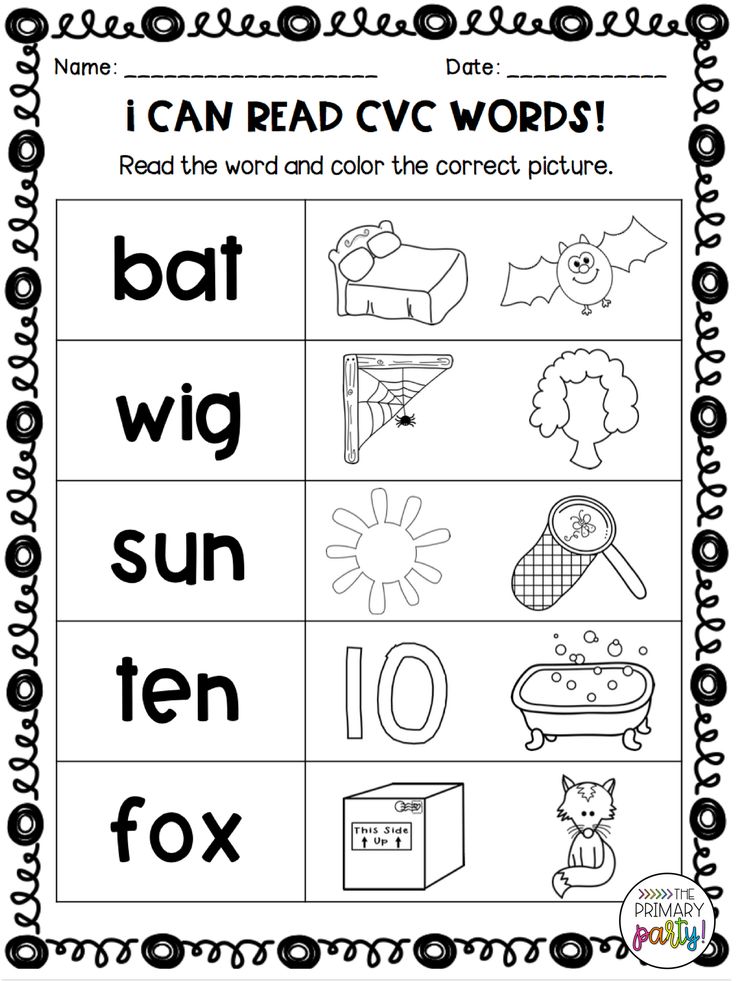 Draw a picture on a whiteboard or chalkboard, name individual letters and have your child identify and erase items in the picture that start with that letter. PreKinders suggests drawing a snowman with a hat for “h,” buttons for “b” and carrot for “c.” If your child is old enough, you could also reverse the roles of artist and eraser, once they see how it’s done.
Draw a picture on a whiteboard or chalkboard, name individual letters and have your child identify and erase items in the picture that start with that letter. PreKinders suggests drawing a snowman with a hat for “h,” buttons for “b” and carrot for “c.” If your child is old enough, you could also reverse the roles of artist and eraser, once they see how it’s done.
8. Mystery bag
In this tactile activity from PreKinders, you’ll place three objects within a bag—like a ball, bug and button for the letter “b”—have your child name each item, and guess the “mystery letter” that unites all of the objects. If you have more than one little one learning phonics, you can have them fill a bag for the others with objects around the house to have the others guess.
9. 4 in a row
The Measured Mom recommends this game for older preschoolers who can count to four and know most of their letters, but need a bit of review. You can print this simple sheet from this website and take turns naming and pronouncing a letter.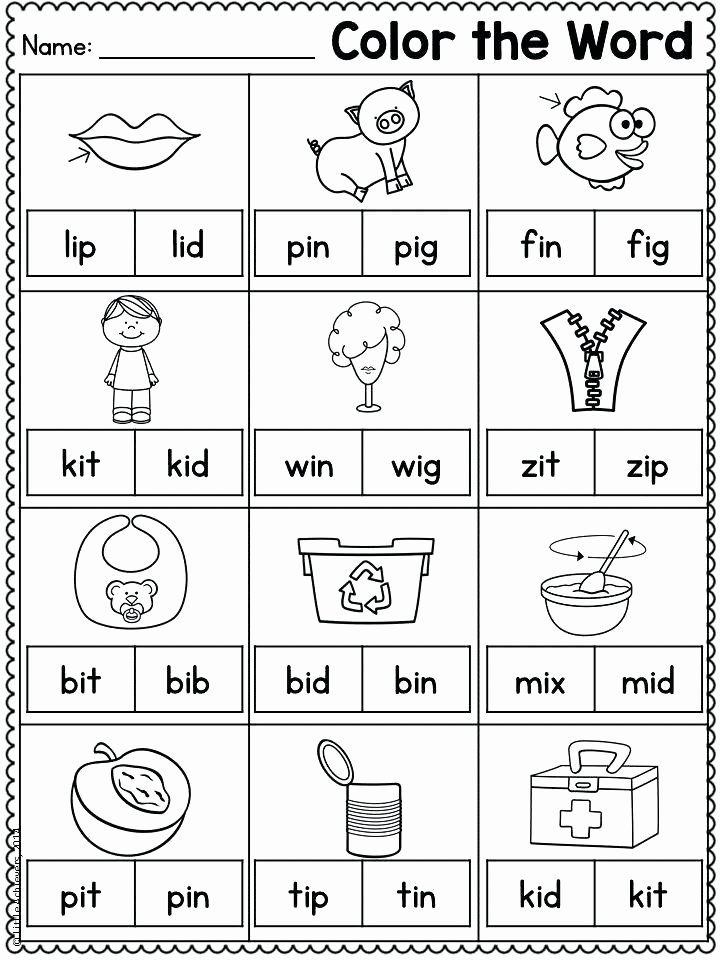 When you or your child names a letter correctly, you can color it in or cover it with a small object or game piece. The first to get four in a row wins!
When you or your child names a letter correctly, you can color it in or cover it with a small object or game piece. The first to get four in a row wins!
10. Kaboom alphabet
Using just jumbo craft sticks and a cup, each player will pull a stick out of the cup and say the sound of the letter written on the stick they draw. Then, they get to keep that stick. But “KABOOM” is written on one stick and every time it’s pulled, the unlucky player has to put all their sticks back in the cup. You can even set a timer as Fun Learning for Kids recommends for a fun speed-round version.
11. Say two words
This simple game from PreKinders requires zero materials and allows kiddos to stretch their legs and get some energy out. When you say two words that begin with the same sound, they should stand up as fast as they can, but stay seated if the words do not begin with the same sound. If playing with more children, you can create an elimination system, so that there’s one clear winner determined.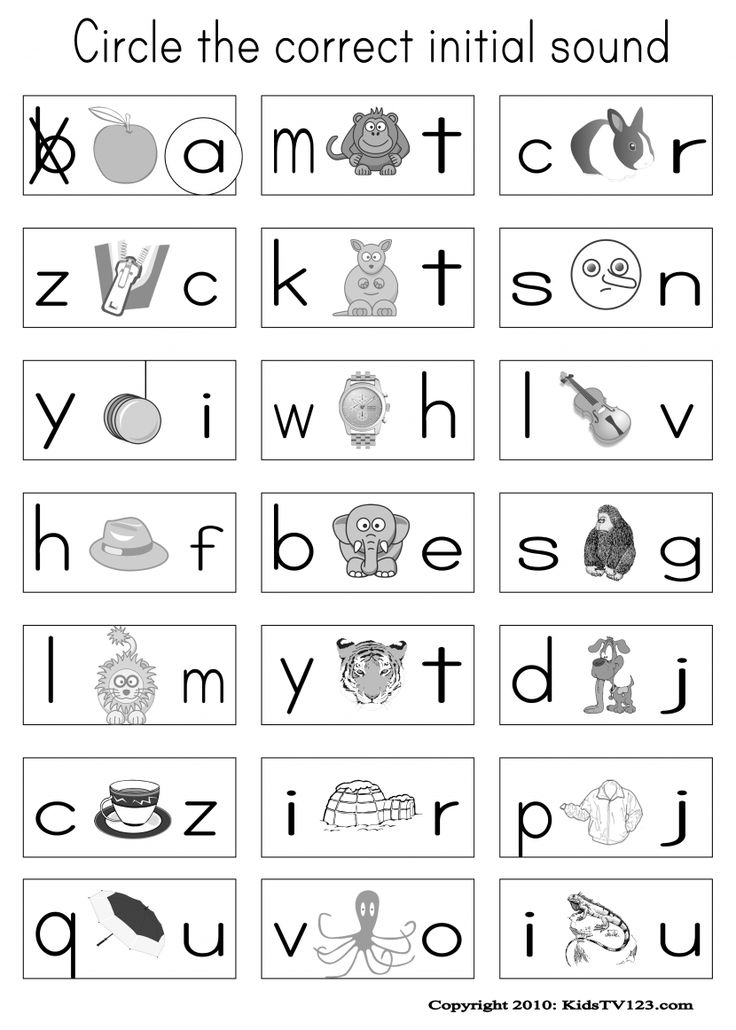
12. Monster names
This simple activity from PreKinders is fun anytime and takes absolutely zero setup. Have preschoolers replace the first letter of their name with the letter “M,” and add ‘mad’ to the beginning. For example, Ashely would become Mad Monster Mashlyn. The kiddos can then stomp around, growl and play monsters with each other. This simple approach for reinforcing phonetic sounds can obviously be expanded and modified for further practice (e.g., Cool Cat Cashlyn, Funny Fish Fashlyn, etc.).
13. Smack the letter
Fun Learning for Kids recommends this flexible and fun game. Preschoolers will love getting to use a flyswatter to hit the letters you write on sticky notes and pronounce for them to identify. You can pick the letter sounds they most need to work on. If playing with a peer, this game can become a race. Two to three children can play for points to see who can reach 10 first. It can also be played tournament-style, if you’re working with a larger group.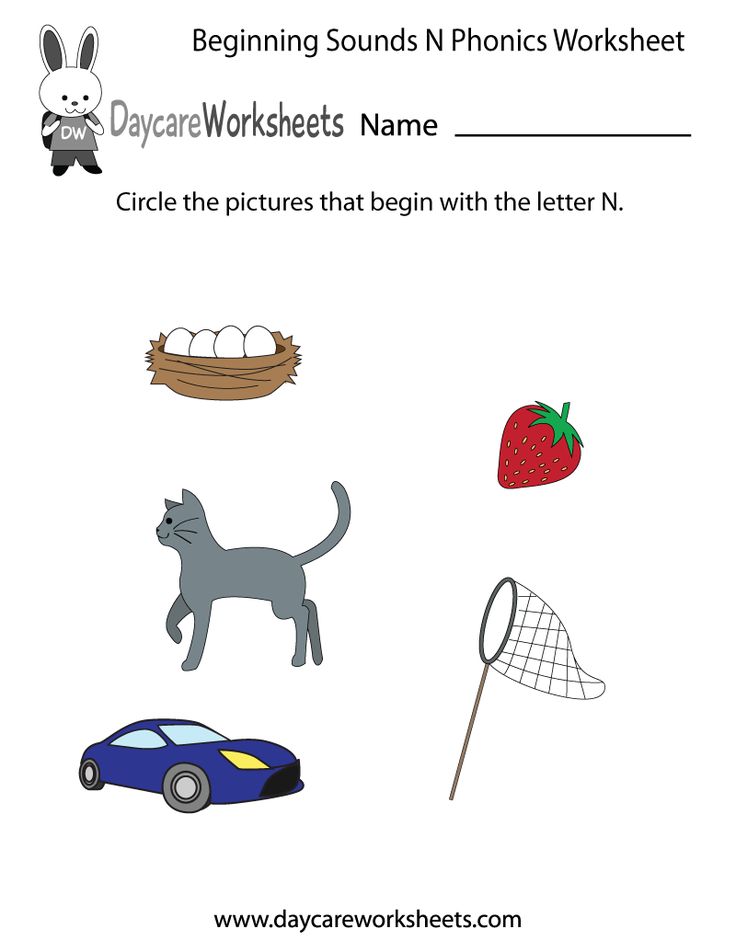
14. Phonics I-Spy discovery bottle
Imagination Tree offers this fun boredom buster. Fill a large juice bottle with a variety of small items that start with various letters, using rice or sand as a filler for the remaining space. To play, use an alphabet deck or phonics clip cards to pick a letter and have your child shake the bottle and hunt for the item with the corresponding beginning letter.
Make phonics fun!
If these ideas excite you, it probably isn’t because you only love phonics. It’s more likely you love helping little ones develop their minds too. If making a career out of that love sounds like a bright idea, learn about just how important early childhood education is and how you could play a role in it.
90,000 Page Not Found - Sokolova Natalia Viktorovna- Information on professional activities
- Success in professional activities
- Participation in professional competitions
- Publications
- Consultative and methodological activity
- Pedagogical developments
- Logopedic piggy bank
- Articulation gymnastics
- Stuttering
- Caring parents
- Useful links
- Sitemap
Unfortunately the page you're looking doesn't exist (anymore) or there was an error in the link you followed or typed.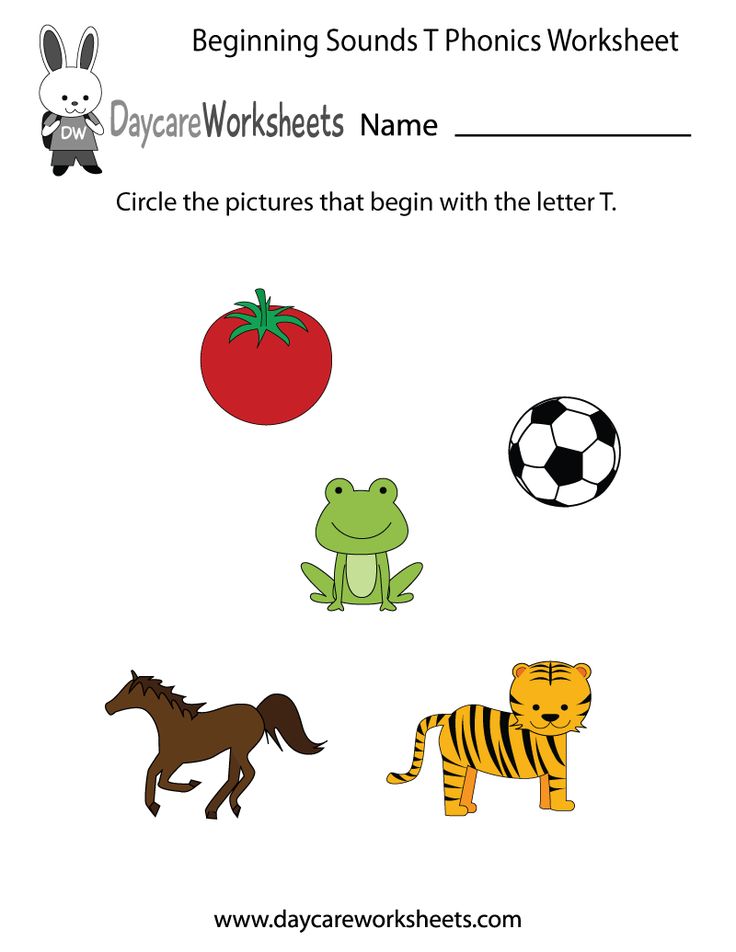 This way to the home page.
This way to the home page.
- Main
- Information about professional activities
-
- Contacts
-
- Online reception
- Professional success
- Participation in professional competitions
- Publications
- Advisory and methodological activities
-
- Webinars
- Expert activities
- New on site
-
- Interaction with parents
- Interaction with teachers
- Regulations
- Monitoring and Performance
-
- My graduates
- Achievements of children
- Educational development
-
- Lapbook
- Let's do together Lapbook
-
- Practical sound material Pb
- Practical material for sound L
- Practical material for sound P
- My presentations
- Speech Pathologist's Universal Handbook
- Speech therapy moneybox
-
- Help for speech therapists
- Speech therapy development kits
- Sound-letter analysis of words
- Articulation gymnastics
- Stuttering
- Caring parents
-
- Fixing houses
- Logopedic diagnostics
- Speech therapist advice
- Back to school soon
- Games for the little ones
- How to save money on a speech therapist
-
- Stages of logopedic work
- Preparatory phase
- Sound production
- Sound Automation
- Sound C
- Sound S
- Sound Z
- Sound 3b
- Sound C
- Sound W
- Zvuk Zh
- Sound H
- Sound SC
- Sound L
- Sound L
- Sound R
- Sound Pb
- Sound differentiation
-
- Sounds L-R
- Sounds L-L
- Sounds P-Pb
- Sounds S-Sh
- Sounds W-F
- Z-Zh Sounds
- Questionnaires
- Games - presentations
- Useful links
- Sitemap
-
- News archive
- 03/19/2023 - Speech therapy corner.
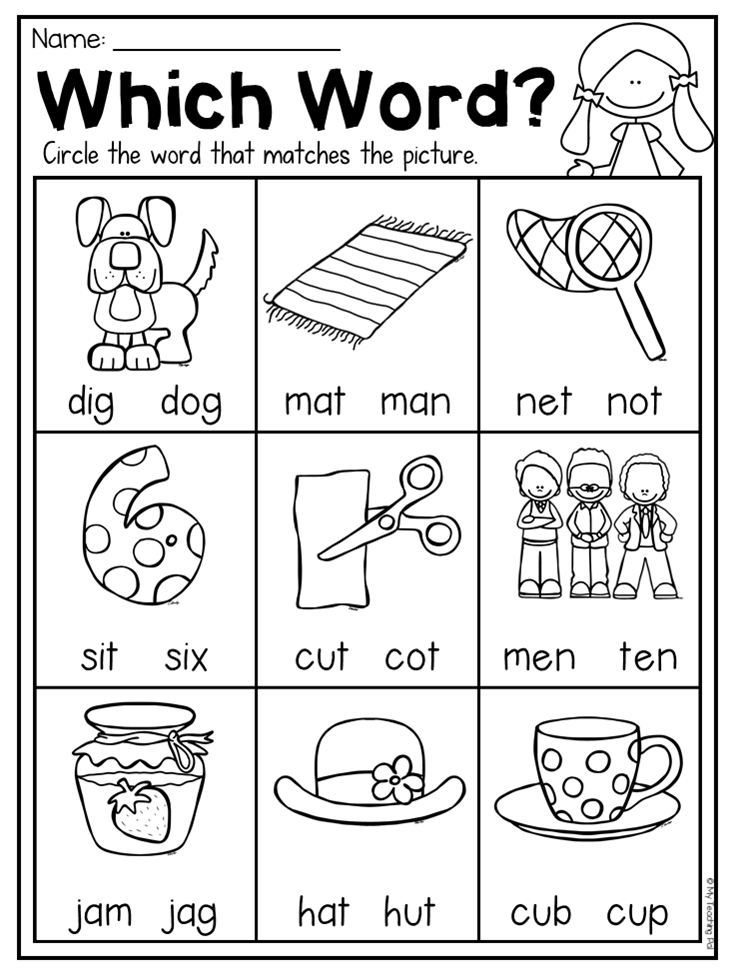 General underdevelopment of speech.
General underdevelopment of speech. - 03/10/2023 - Speech therapy corner. Phonetic-phonemic underdevelopment of speech.
- 03/07/2023 - Happy Women's Day!
- 02/22/2023 - Happy Defender of the Fatherland Day!
- 05/02/2023 - Speech therapy corner. Speech breathing.
- 01/26/2023 - Speech therapy corner. Fun-developers.
- 01/16/2023 - Speech therapy corner. Finger games.
- 12/28/2022 - Happy 2023!
- 12/04/2022 - Speech therapy corner. Games in the kitchen
- 11/24/2022 - Speech therapy corner. Auditory attention
- 11/09/2022 - Speech therapy corner. Articulation gymnastics
- 10/19/2022 - One and many
- 02/10/2022 - Speech therapy corner. Finger massage
- 03/09/2022 - What a vowel
- 03/07/2022 - Dear women, happy holiday!
- 02/27/2022 - Moms and babies
- 02/01/2022 - What are the pies with?
- 01/20/2022 - Little Red Riding Hood
- 01/12/2022 - Sauce
- 12/31/2021 - Happy New Year 2022!
- 12/15/2021 - Decorate the letter
- 12/08/2021 - Fixing the L sound interesting!
- 01/12/2021 - Come up with a sentence
- 08/11/2021 - Sound automation L
- 10/19/2021 - Speech therapy room
- 12/10/2021 - Sound automation is interesting!
- 09/12/2021 - Tests for the development of children 6 years old
- 09/01/2021 - Knowledge Day
- 06/23/2021 - Fixing sounds in the summer!
- 07/06/2021 - You MUST work on your speech!
- 06/05/2021 - How interesting and accessible to tell children about the Victory Day holiday?
- 04/12/2021 - The syllable structure of the word0004
- 03/26/2021 - Hidden objects
- 03/07/2021 - Happy Holidays!
- 02/16/2021 - Find a shadow
- 01/19/2021 - Replenishing the speech therapy piggy bank 2020 - REPEAT DRAWINGS BY CELLS
- 10/21/2020 - Speech therapy verses
- 09/14/2020 - Prevention of SARS and FLU
- 09/06/2020 - Prevention of coronavirus.
 Rospotrebnadzor recommendations
Rospotrebnadzor recommendations - 08/02/2020 - Myths about development, upbringing and education
- 07/15/2020 - Appearance of speech sounds in ontogeny /2020 - Along forest paths
- 04/15/2020 - Games with paired cards
- 03/26/2020 - Development of language ability in children
- 03/11/2020 - Educational fairy tales
- 02/27/2020 - Learning tell by picture at 3-4 years old
- 02/01/2020 - Card file of didactic games and exercises for the development of speech of preschoolers
- 01/12/2020 - A big book of tasks and exercises for the development of coherent speech of the baby
- 12/18/2019 - We read by syllables!
- 12/02/2019 - Correction of violations of the syllabic structure of the word
- 11/14/2019 - Development of coherent speech from 5-6 years old
- 11/03/2019 - Coherent speech
- 10/06/2019 - The magical world of sounds and words
- 02/10/2019 - To help speech therapists
- 09/18/2019 - We play - develop auditory perception!
- 09/09/2019 - Develop phonemic awareness
- 08/15/2019 - Let's play in the summer!
- 07/20/2019 - Rules of the road
- 05/27/2019 - Edition 2019
- 05/19/2019 - Fix the sounds in summer!
- 04/16/2019 - On the threshold of school
- 03/21/2019 - Delicious speech therapy games - Learn by playing!
- 03/02/2019 - How to learn poetry?
- 01/14/2019 - Signs of speech development disorders
- 12/18/2018 - DEVELOPMENT RATES IN THE CHILD
- 08/12/2018 - Polite words
- 21/11/2018 - Sound-letter analysis of words
- 10/01/2 How to turn reading into pleasure?
- 04/10/2018 - Happy Teacher's Day!
- 09/27/2018 - Happy preschool worker's day!
- 14/09/2018 - SCREENING CHART FOR EARLY CHILDREN WITH DEVELOPMENTAL PROBLEMS
- 10/09/2018 - Differential diagnosis of "speechless" young children
- 07/13/2018 - Fixing sounds in the summer!
- 07/05/2018 - Activation of children's vocabulary
- 07/02/2018 - Summer health campaign
- 06/21/2018 - Speech development at the end of preschool childhood SUMMER
- 05/26/2018 - Goodbye kindergarten!
- 04/21/2018 - Prevention of violations of sound pronunciation
- 04/11/2018 - Phonemic hearing - the basis of correct speech
- 03/16/2018 - Automation of sound Р
- 03/06/2018 - Automation of sound L
- 02/16/2018 - Sounds P, P.
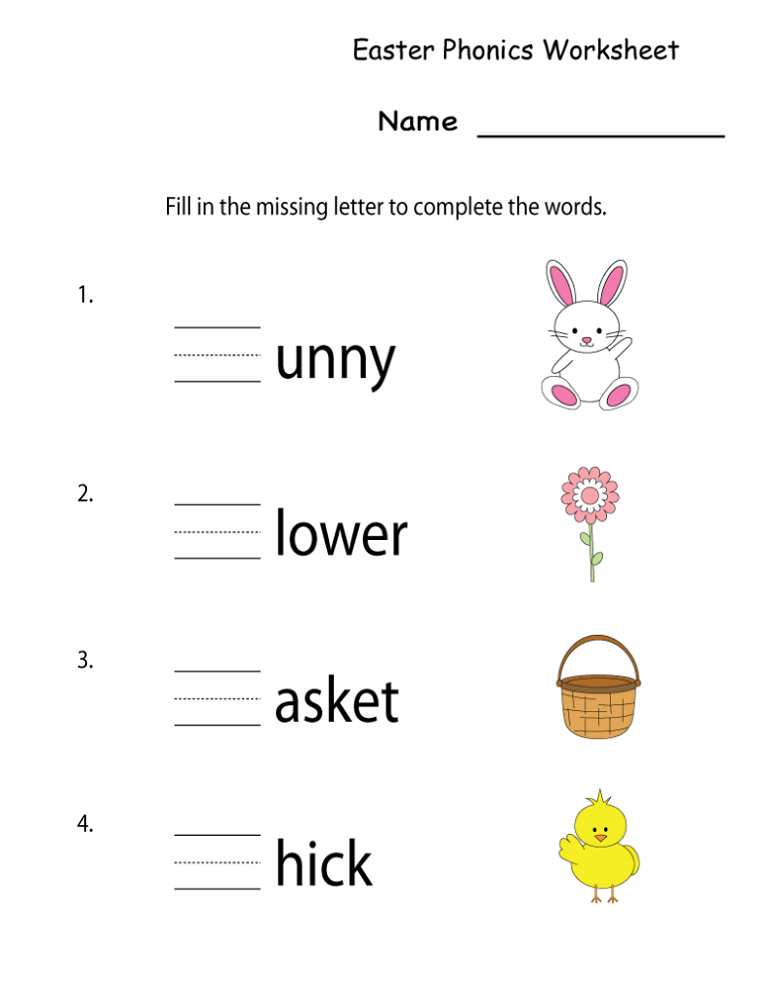 Letter P
Letter P - 02/09/2018 - Sounds N, N. Letter H
- 01/02/2018 - Sounds T, Th. Letter T
- 01/27/2018 - Test questionnaire on the development of speech in young children
- 01/25/2018 - Sounds K, Ky. Letter K
- 08/12/2017 - Tale about sound O
- 12/01/2017 - Tale about sound I
- 11/28/2017 - Tale about sound U
- 11/22/2017 - Tale about sound A
- 10/11/2017 - Vowel sounds "Entertaining phonetics"
- 06/11/2017 - Fixing houses
- 09/30/2017 - Happy Teacher's Day!
- 09/01/2017 - How to start the new school year without stress
- 08/16/2017 - Rules of the Road
- 07/21/2017 - Time for holidays! Traffic Laws!
- 06/22/2017 - Games for the development of vocabulary
- 06/14/2017 - Recommended reading kindergarten
- 05/05/2017 - How to teach poetry with children
- 03/30/2017 - Thanks to parents!
- 03/13/2017 - Playing with the Lapbook!
- 11/03/2017 - Playing with the Lapbook!
- 03/09/2017 - Keep playing with the Lapbook
- 03/05/2017 - Picture material for sound automation R ?
- 06/02/2017 - Lapbook - how to make?
- 01/02/2017 - LEPBOOK
- 01/20/2017 - Sounds N, N.
 Letter H
Letter H - 12/27/2016 - I participate and win in competitions.
- 12/25/2016 - Congratulations!
- 12/15/2016 - Congratulations!
- 09/12/2016 - Games for the first year of life
- 06/12/2016 - Advice for the stand
- 11/30/2016 - Enriching and developing the child's vocabulary
- 10/28/2016 - Games for babies 09/29/2016 - I invite you to the world of amazing speech!
- 09/22/2016 - I win competitions!
- 09/12/2016 - I participate in contests!
- 06/09/2016 - Congratulations!
- 09/03/2016 - How to help children with communication disorders?
- 08/24/2016 - How to teach a child to communicate
- 06/06/2016 - I continue to win competitions!
- 01/06/2016 - Children's Day!
- 05/27/2016 - Graduation!
- 05/12/2016 - The Tale of the Tongue
- 04/30/2016 - Participation in the contest!
- 04/26/2016 - Congratulations!
- 04/18/2016 - I continue to participate in contests!
- 04/02/2016 - Congratulations!
- 03/28/2016 - Articulation gymnastics for kids!
- 03/18/2016 - Congratulations!
- 08/03/2016 - Happy Women's Day!
- 03/02/2016 - Recommendations for educators
- 12/29/2015 - My subject site
- 12/14/2015 - I continue to publish my works
- 12/04/2015 - Interesting approaches to performing Articulation Gymnastics
- 11/27/2015 - Congratulations to Tatiana Dubrovskaya!
- 11/20/2015 - Speech material on the differentiation of sounds
- 10/15/2015 - Automation of sounds
- 10/02/2015 - Automation of sounds
- 09/30/2015 - Congratulations!
- 09/28/2015 - Automation of delivered sounds
- 09/21/2015 - I continue to publish
- 09/17/2015 - All-Russian creative competition
- 09/07/2015 - I participate in international competitions!
- 09/03/2015 - Staging sounds
- 09/01/2015 - Congratulations on the DAY OF KNOWLEDGE!
- 08/28/2015 - For you parents!
- 06/16/2015 - I continue to publish!
- 06/15/2015 - Congratulations!
- 06/02/2015 - Articulation gymnastics
- 05/29/2015 - Articulation gymnastics
- 05/11/2015 - I participate in competitions
- 04/15/2015 - I continue to publish
- 10/04/2015 - Speech rules for stutterers
- 06/04/2015 - Teacher's advice!
- 04/01/2015 - Medicines
- 03/18/2015 - Stuttering.
 What it is?
What it is? - 03/03/2015 - Back to school soon!
- 02/27/2015 - Tips of a speech therapist
- 02/02/2015 - Added consultation to the section "Speech therapy diagnostics"
- 01/26/2015 - Speech therapy diagnostics in the All-Russian competition!
- 12/01/2014 - Pedagogical workshop
- 11/24/2014 - Photo of the group "Rechetsvetik" DS "Polyanka"
- 11/20/2014 - Continue to publish
- 11/17/2014 - Useful links!
- 11/11/2014 - Changes on the "Colleague Sites" page
- 11/05/2014 - Preventive examination of children completed
- 10/01/2014 - Structure of the speech therapy center
- 09/15/2014 - Added photos of my graduates
- 06/13/2014 - Useful video
- 06/10/2014 - Universal reference book of a speech therapist
- 06/06/2014 - Summing up the results of the 2013-2014 academic year
- 06/02/2014 - Author's materials
- 05/30/2014 - "Questionnaire for parents" 05/23/2014 - News for parents
- 04/04/2014 - Hurrah! I have a portfolio site!
Formation of the phonetic-phonemic side of speech in preschool children with pseudobulbar dysarthria using health-saving technologies
%PDF-1.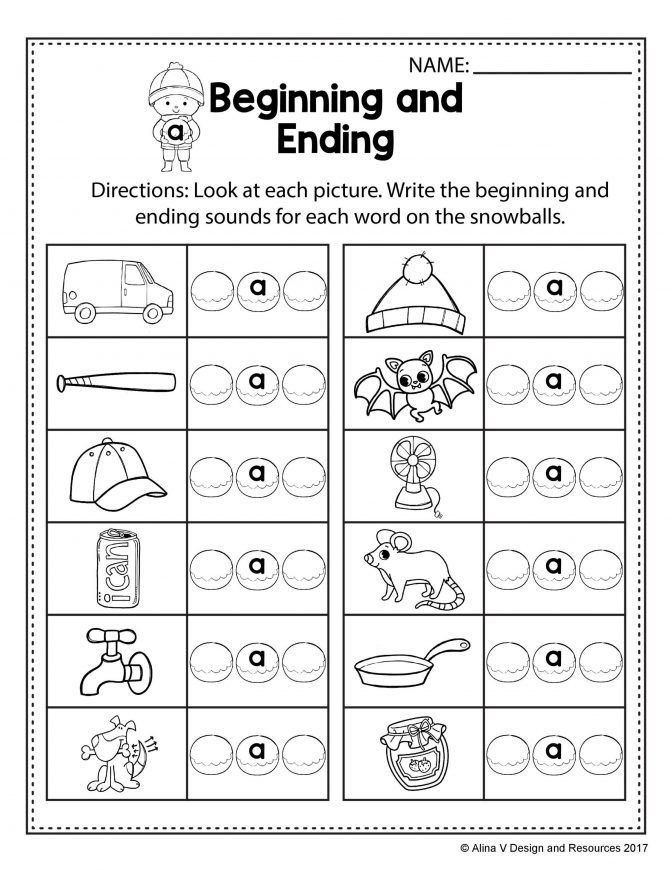 7 % 10 obj > /Metadata 4 0R /ViewerPreferences 5 0 R >> endobj 6 0 obj /Title >> endobj 20 obj > endobj 3 0 obj > endobj 40 obj > stream
7 % 10 obj > /Metadata 4 0R /ViewerPreferences 5 0 R >> endobj 6 0 obj /Title >> endobj 20 obj > endobj 3 0 obj > endobj 40 obj > stream
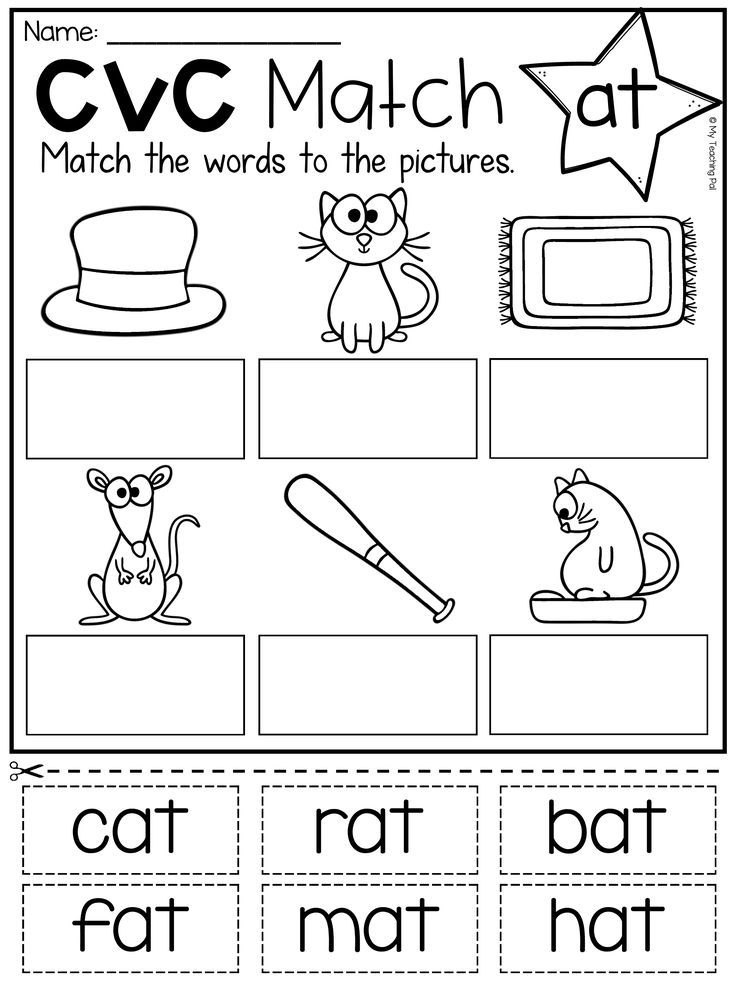 32 841.92] /Contents[89 0 R 90 0 R 91 0 R] /group> /Tabs /S /StructParents 0 /Annots [92 0R] >> endobj 80 obj > /ExtGState> /ProcSet [/PDF /Text /ImageB /ImageC /ImageI] >> /MediaBox [0 0 595.32 841.92] /Contents 94 0 R /group> /Tabs /S /StructParents 1 >> endobj 9 0 obj > /ExtGState> /ProcSet [/PDF /Text /ImageB /ImageC /ImageI] >> /MediaBox [0 0 595.32 841.92] /Contents 95 0 R /group> /Tabs /S /StructParents 2 >> endobj 10 0 obj > /ExtGState> /ProcSet [/PDF /Text /ImageB /ImageC /ImageI] >> /MediaBox[0 0 595.32 841.92] /Contents 97 0 R /group> /Tabs /S /StructParents 3 >> endobj 11 0 obj > /ExtGState> /ProcSet [/PDF /Text /ImageB /ImageC /ImageI] >> /MediaBox [0 0 595.32 841.92] /Contents 98 0 R /group> /Tabs /S /StructParents 4 >> endobj 12 0 obj > /ExtGState> /ProcSet [/PDF /Text /ImageB /ImageC /ImageI] >> /MediaBox [0 0 595.32 841.92] /Contents 100 0R /group> /Tabs /S /StructParents 5 >> endobj 13 0 obj > /ExtGState> /ProcSet [/PDF /Text /ImageB /ImageC /ImageI] >> /MediaBox[0 0 595.
32 841.92] /Contents[89 0 R 90 0 R 91 0 R] /group> /Tabs /S /StructParents 0 /Annots [92 0R] >> endobj 80 obj > /ExtGState> /ProcSet [/PDF /Text /ImageB /ImageC /ImageI] >> /MediaBox [0 0 595.32 841.92] /Contents 94 0 R /group> /Tabs /S /StructParents 1 >> endobj 9 0 obj > /ExtGState> /ProcSet [/PDF /Text /ImageB /ImageC /ImageI] >> /MediaBox [0 0 595.32 841.92] /Contents 95 0 R /group> /Tabs /S /StructParents 2 >> endobj 10 0 obj > /ExtGState> /ProcSet [/PDF /Text /ImageB /ImageC /ImageI] >> /MediaBox[0 0 595.32 841.92] /Contents 97 0 R /group> /Tabs /S /StructParents 3 >> endobj 11 0 obj > /ExtGState> /ProcSet [/PDF /Text /ImageB /ImageC /ImageI] >> /MediaBox [0 0 595.32 841.92] /Contents 98 0 R /group> /Tabs /S /StructParents 4 >> endobj 12 0 obj > /ExtGState> /ProcSet [/PDF /Text /ImageB /ImageC /ImageI] >> /MediaBox [0 0 595.32 841.92] /Contents 100 0R /group> /Tabs /S /StructParents 5 >> endobj 13 0 obj > /ExtGState> /ProcSet [/PDF /Text /ImageB /ImageC /ImageI] >> /MediaBox[0 0 595. 32 841.92] /Contents 101 0 R /group> /Tabs /S /StructParents 6 >> endobj 14 0 obj > /ExtGState> /ProcSet [/PDF /Text /ImageB /ImageC /ImageI] >> /MediaBox [0 0 595.32 841.92] /Contents 102 0 R /group> /Tabs /S /StructParents 7 >> endobj 15 0 obj > /ExtGState> /ProcSet [/PDF /Text /ImageB /ImageC /ImageI] >> /MediaBox [0 0 595.32 841.92] /Contents 104 0 R /group> /Tabs /S /StructParents 8 >> endobj 16 0 obj > /ExtGState> /ProcSet [/PDF /Text /ImageB /ImageC /ImageI] >> /MediaBox[0 0 595.32 841.92] /Contents 106 0 R /group> /Tabs /S /StructParents 9 >> endobj 17 0 obj > /ExtGState> /ProcSet [/PDF /Text /ImageB /ImageC /ImageI] >> /MediaBox [0 0 595.32 841.92] /Contents 107 0R /group> /Tabs /S /StructParents 10 >> endobj 18 0 obj > /ExtGState> /ProcSet [/PDF /Text /ImageB /ImageC /ImageI] >> /MediaBox [0 0 595.32 841.92] /Contents 108 0 R /group> /Tabs /S /StructParents 11 >> endobj 19 0 obj > /ExtGState> /ProcSet [/PDF /Text /ImageB /ImageC /ImageI] >> /MediaBox[0 0 595.32 841.92] /Contents 110 0R /group> /Tabs /S /StructParents 12 >> endobj 20 0 obj > /ExtGState> /ProcSet [/PDF /Text /ImageB /ImageC /ImageI] >> /MediaBox [0 0 595.
32 841.92] /Contents 101 0 R /group> /Tabs /S /StructParents 6 >> endobj 14 0 obj > /ExtGState> /ProcSet [/PDF /Text /ImageB /ImageC /ImageI] >> /MediaBox [0 0 595.32 841.92] /Contents 102 0 R /group> /Tabs /S /StructParents 7 >> endobj 15 0 obj > /ExtGState> /ProcSet [/PDF /Text /ImageB /ImageC /ImageI] >> /MediaBox [0 0 595.32 841.92] /Contents 104 0 R /group> /Tabs /S /StructParents 8 >> endobj 16 0 obj > /ExtGState> /ProcSet [/PDF /Text /ImageB /ImageC /ImageI] >> /MediaBox[0 0 595.32 841.92] /Contents 106 0 R /group> /Tabs /S /StructParents 9 >> endobj 17 0 obj > /ExtGState> /ProcSet [/PDF /Text /ImageB /ImageC /ImageI] >> /MediaBox [0 0 595.32 841.92] /Contents 107 0R /group> /Tabs /S /StructParents 10 >> endobj 18 0 obj > /ExtGState> /ProcSet [/PDF /Text /ImageB /ImageC /ImageI] >> /MediaBox [0 0 595.32 841.92] /Contents 108 0 R /group> /Tabs /S /StructParents 11 >> endobj 19 0 obj > /ExtGState> /ProcSet [/PDF /Text /ImageB /ImageC /ImageI] >> /MediaBox[0 0 595.32 841.92] /Contents 110 0R /group> /Tabs /S /StructParents 12 >> endobj 20 0 obj > /ExtGState> /ProcSet [/PDF /Text /ImageB /ImageC /ImageI] >> /MediaBox [0 0 595. 32 841.92] /Contents 111 0 R /group> /Tabs /S /StructParents 13 >> endobj 21 0 obj > /ExtGState> /ProcSet [/PDF /Text /ImageB /ImageC /ImageI] >> /MediaBox [0 0 595.32 841.92] /Contents 112 0 R /group> /Tabs /S /StructParents 18 >> endobj 22 0 obj > /ExtGState> /ProcSet [/PDF /Text /ImageB /ImageC /ImageI] >> /MediaBox[0 0 595.32 841.92] /Contents 113 0 R /group> /Tabs /S /StructParents 19 >> endobj 23 0 obj > /ExtGState> /ProcSet [/PDF /Text /ImageB /ImageC /ImageI] >> /MediaBox [0 0 595.32 841.92] /Contents 114 0R /group> /Tabs /S /StructParents 20 >> endobj 24 0 obj > /ExtGState> /ProcSet [/PDF /Text /ImageB /ImageC /ImageI] >> /MediaBox [0 0 595.32 841.92] /Contents 115 0R /group> /Tabs /S /StructParents 21 >> endobj 25 0 obj > /ExtGState> /ProcSet [/PDF /Text /ImageB /ImageC /ImageI] >> /MediaBox[0 0 595.32 841.92] /Contents 116 0 R /group> /Tabs /S /StructParents 14 >> endobj 26 0 obj > /ExtGState> /ProcSet [/PDF /Text /ImageB /ImageC /ImageI] >> /MediaBox [0 0 595.32 841.92] /Contents 117 0R /group> /Tabs /S /StructParents 22 >> endobj 27 0 obj > /ExtGState> /ProcSet [/PDF /Text /ImageB /ImageC /ImageI] >> /MediaBox [0 0 595.
32 841.92] /Contents 111 0 R /group> /Tabs /S /StructParents 13 >> endobj 21 0 obj > /ExtGState> /ProcSet [/PDF /Text /ImageB /ImageC /ImageI] >> /MediaBox [0 0 595.32 841.92] /Contents 112 0 R /group> /Tabs /S /StructParents 18 >> endobj 22 0 obj > /ExtGState> /ProcSet [/PDF /Text /ImageB /ImageC /ImageI] >> /MediaBox[0 0 595.32 841.92] /Contents 113 0 R /group> /Tabs /S /StructParents 19 >> endobj 23 0 obj > /ExtGState> /ProcSet [/PDF /Text /ImageB /ImageC /ImageI] >> /MediaBox [0 0 595.32 841.92] /Contents 114 0R /group> /Tabs /S /StructParents 20 >> endobj 24 0 obj > /ExtGState> /ProcSet [/PDF /Text /ImageB /ImageC /ImageI] >> /MediaBox [0 0 595.32 841.92] /Contents 115 0R /group> /Tabs /S /StructParents 21 >> endobj 25 0 obj > /ExtGState> /ProcSet [/PDF /Text /ImageB /ImageC /ImageI] >> /MediaBox[0 0 595.32 841.92] /Contents 116 0 R /group> /Tabs /S /StructParents 14 >> endobj 26 0 obj > /ExtGState> /ProcSet [/PDF /Text /ImageB /ImageC /ImageI] >> /MediaBox [0 0 595.32 841.92] /Contents 117 0R /group> /Tabs /S /StructParents 22 >> endobj 27 0 obj > /ExtGState> /ProcSet [/PDF /Text /ImageB /ImageC /ImageI] >> /MediaBox [0 0 595.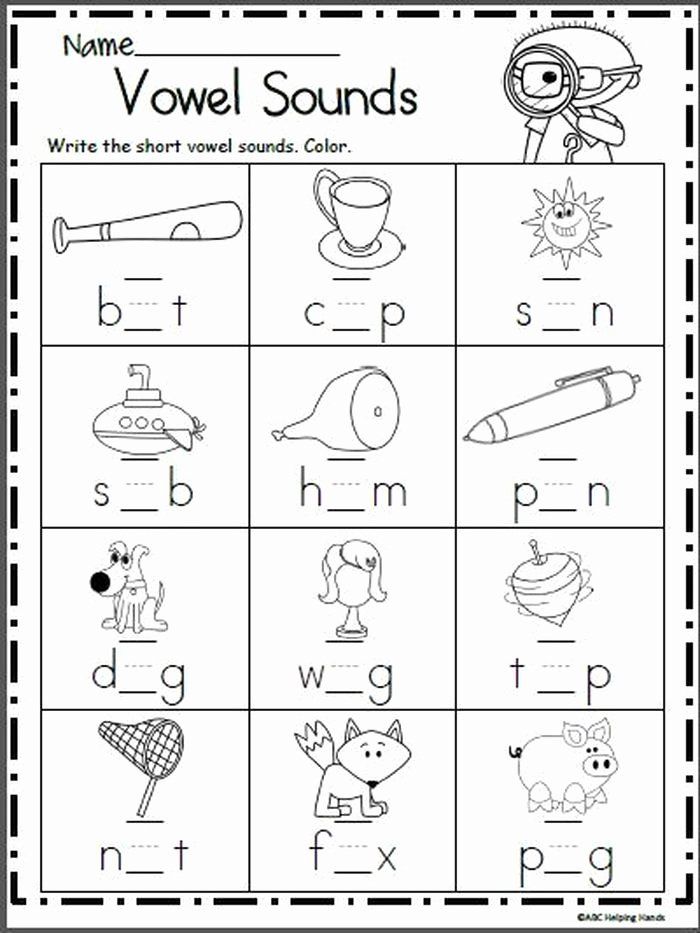 32 841.92] /Contents 118 0R /group> /Tabs /S /StructParents 23 >> endobj 28 0 obj > /ExtGState> /ProcSet [/PDF /Text /ImageB /ImageC /ImageI] >> /MediaBox[0 0 595.32 841.92] /Contents 120 0R /group> /Tabs /S /StructParents 15 >> endobj 29 0 obj > /ExtGState> /ProcSet [/PDF /Text /ImageB /ImageC /ImageI] >> /MediaBox [0 0 595.32 841.92] /Contents 121 0R /group> /Tabs /S /StructParents 16 >> endobj 30 0 obj > /ExtGState> /ProcSet [/PDF /Text /ImageB /ImageC /ImageI] >> /MediaBox [0 0 595.32 841.92] /Contents 122 0 R /group> /Tabs /S /StructParents 17 >> endobj 31 0 obj > /ExtGState> /ProcSet [/PDF /Text /ImageB /ImageC /ImageI] >> /MediaBox[0 0 595.32 841.92] /Contents 123 0 R /group> /Tabs /S /StructParents 24 >> endobj 32 0 obj > /ExtGState> /ProcSet [/PDF /Text /ImageB /ImageC /ImageI] >> /MediaBox [0 0 595.32 841.92] /Contents 124 0 R /group> /Tabs /S /StructParents 25 >> endobj 33 0 obj > /ExtGState> /ProcSet [/PDF /Text /ImageB /ImageC /ImageI] >> /MediaBox [0 0 595.32 841.92] /Contents 125 0 R /group> /Tabs /S /StructParents 26 >> endobj 34 0 obj > /ExtGState> /ProcSet [/PDF /Text /ImageB /ImageC /ImageI] >> /MediaBox[0 0 595.
32 841.92] /Contents 118 0R /group> /Tabs /S /StructParents 23 >> endobj 28 0 obj > /ExtGState> /ProcSet [/PDF /Text /ImageB /ImageC /ImageI] >> /MediaBox[0 0 595.32 841.92] /Contents 120 0R /group> /Tabs /S /StructParents 15 >> endobj 29 0 obj > /ExtGState> /ProcSet [/PDF /Text /ImageB /ImageC /ImageI] >> /MediaBox [0 0 595.32 841.92] /Contents 121 0R /group> /Tabs /S /StructParents 16 >> endobj 30 0 obj > /ExtGState> /ProcSet [/PDF /Text /ImageB /ImageC /ImageI] >> /MediaBox [0 0 595.32 841.92] /Contents 122 0 R /group> /Tabs /S /StructParents 17 >> endobj 31 0 obj > /ExtGState> /ProcSet [/PDF /Text /ImageB /ImageC /ImageI] >> /MediaBox[0 0 595.32 841.92] /Contents 123 0 R /group> /Tabs /S /StructParents 24 >> endobj 32 0 obj > /ExtGState> /ProcSet [/PDF /Text /ImageB /ImageC /ImageI] >> /MediaBox [0 0 595.32 841.92] /Contents 124 0 R /group> /Tabs /S /StructParents 25 >> endobj 33 0 obj > /ExtGState> /ProcSet [/PDF /Text /ImageB /ImageC /ImageI] >> /MediaBox [0 0 595.32 841.92] /Contents 125 0 R /group> /Tabs /S /StructParents 26 >> endobj 34 0 obj > /ExtGState> /ProcSet [/PDF /Text /ImageB /ImageC /ImageI] >> /MediaBox[0 0 595. 32 841.92] /Contents 126 0 R /group> /Tabs /S /StructParents 27 >> endobj 35 0 obj > /ExtGState> /ProcSet [/PDF /Text /ImageB /ImageC /ImageI] >> /MediaBox [0 0 595.32 841.92] /Contents 127 0 R /group> /Tabs /S /StructParents 28 >> endobj 36 0 obj > /ExtGState> /ProcSet [/PDF /Text /ImageB /ImageC /ImageI] >> /MediaBox [0 0 595.32 841.92] /Contents 128 0R /group> /Tabs /S /StructParents 29 >> endobj 37 0 obj > /ExtGState> /ProcSet [/PDF /Text /ImageB /ImageC /ImageI] >> /MediaBox[0 0 595.32 841.92] /Contents 129 0R /group> /Tabs /S /StructParents 30 >> endobj 38 0 obj > /ExtGState> /ProcSet [/PDF /Text /ImageB /ImageC /ImageI] >> /MediaBox [0 0 595.32 841.92] /Contents 130 0 R /group> /Tabs /S /StructParents 31 >> endobj 39 0 obj > /ExtGState> /ProcSet [/PDF /Text /ImageB /ImageC /ImageI] >> /MediaBox [0 0 595.32 841.92] /Contents 131 0 R /group> /Tabs /S /StructParents 32 >> endobj 40 0 obj > /ExtGState> /ProcSet [/PDF /Text /ImageB /ImageC /ImageI] >> /MediaBox[0 0 595.32 841.92] /Contents 132 0R /group> /Tabs /S /StructParents 33 >> endobj 41 0 obj > /ExtGState> /ProcSet [/PDF /Text /ImageB /ImageC /ImageI] >> /MediaBox [0 0 595.
32 841.92] /Contents 126 0 R /group> /Tabs /S /StructParents 27 >> endobj 35 0 obj > /ExtGState> /ProcSet [/PDF /Text /ImageB /ImageC /ImageI] >> /MediaBox [0 0 595.32 841.92] /Contents 127 0 R /group> /Tabs /S /StructParents 28 >> endobj 36 0 obj > /ExtGState> /ProcSet [/PDF /Text /ImageB /ImageC /ImageI] >> /MediaBox [0 0 595.32 841.92] /Contents 128 0R /group> /Tabs /S /StructParents 29 >> endobj 37 0 obj > /ExtGState> /ProcSet [/PDF /Text /ImageB /ImageC /ImageI] >> /MediaBox[0 0 595.32 841.92] /Contents 129 0R /group> /Tabs /S /StructParents 30 >> endobj 38 0 obj > /ExtGState> /ProcSet [/PDF /Text /ImageB /ImageC /ImageI] >> /MediaBox [0 0 595.32 841.92] /Contents 130 0 R /group> /Tabs /S /StructParents 31 >> endobj 39 0 obj > /ExtGState> /ProcSet [/PDF /Text /ImageB /ImageC /ImageI] >> /MediaBox [0 0 595.32 841.92] /Contents 131 0 R /group> /Tabs /S /StructParents 32 >> endobj 40 0 obj > /ExtGState> /ProcSet [/PDF /Text /ImageB /ImageC /ImageI] >> /MediaBox[0 0 595.32 841.92] /Contents 132 0R /group> /Tabs /S /StructParents 33 >> endobj 41 0 obj > /ExtGState> /ProcSet [/PDF /Text /ImageB /ImageC /ImageI] >> /MediaBox [0 0 595.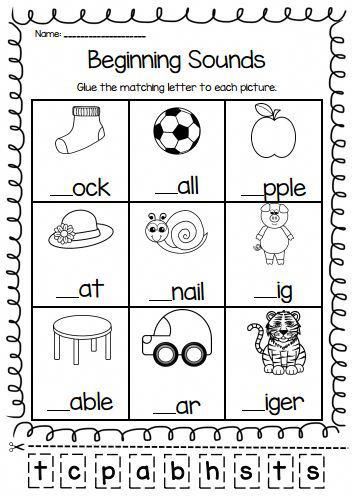 32 841.92] /Contents 133 0 R /group> /Tabs /S /StructParents 34 >> endobj 42 0 obj > /ExtGState> /ProcSet [/PDF /Text /ImageB /ImageC /ImageI] >> /MediaBox [0 0 595.32 841.92] /Contents 134 0 R /group> /Tabs /S /StructParents 35 >> endobj 43 0 obj > /ExtGState> /ProcSet [/PDF /Text /ImageB /ImageC /ImageI] >> /MediaBox[0 0 595.32 841.92] /Contents 135 0 R /group> /Tabs /S /StructParents 36 >> endobj 44 0 obj > /ExtGState> /ProcSet [/PDF /Text /ImageB /ImageC /ImageI] >> /MediaBox [0 0 595.32 841.92] /Contents 136 0R /group> /Tabs /S /StructParents 37 >> endobj 45 0 obj > /ExtGState> /ProcSet [/PDF /Text /ImageB /ImageC /ImageI] >> /MediaBox [0 0 595.32 841.92] /Contents 137 0R /group> /Tabs /S /StructParents 38 >> endobj 46 0 obj > /ExtGState> /ProcSet [/PDF /Text /ImageB /ImageC /ImageI] >> /MediaBox[0 0 595.32 841.92] /Contents 138 0 R /group> /Tabs /S /StructParents 39 >> endobj 47 0 obj > /ExtGState> /ProcSet [/PDF /Text /ImageB /ImageC /ImageI] >> /MediaBox [0 0 595.32 841.92] /Contents 139 0 R /group> /Tabs /S /StructParents 40 >> endobj 48 0 obj > /ExtGState> /ProcSet [/PDF /Text /ImageB /ImageC /ImageI] >> /MediaBox [0 0 595.
32 841.92] /Contents 133 0 R /group> /Tabs /S /StructParents 34 >> endobj 42 0 obj > /ExtGState> /ProcSet [/PDF /Text /ImageB /ImageC /ImageI] >> /MediaBox [0 0 595.32 841.92] /Contents 134 0 R /group> /Tabs /S /StructParents 35 >> endobj 43 0 obj > /ExtGState> /ProcSet [/PDF /Text /ImageB /ImageC /ImageI] >> /MediaBox[0 0 595.32 841.92] /Contents 135 0 R /group> /Tabs /S /StructParents 36 >> endobj 44 0 obj > /ExtGState> /ProcSet [/PDF /Text /ImageB /ImageC /ImageI] >> /MediaBox [0 0 595.32 841.92] /Contents 136 0R /group> /Tabs /S /StructParents 37 >> endobj 45 0 obj > /ExtGState> /ProcSet [/PDF /Text /ImageB /ImageC /ImageI] >> /MediaBox [0 0 595.32 841.92] /Contents 137 0R /group> /Tabs /S /StructParents 38 >> endobj 46 0 obj > /ExtGState> /ProcSet [/PDF /Text /ImageB /ImageC /ImageI] >> /MediaBox[0 0 595.32 841.92] /Contents 138 0 R /group> /Tabs /S /StructParents 39 >> endobj 47 0 obj > /ExtGState> /ProcSet [/PDF /Text /ImageB /ImageC /ImageI] >> /MediaBox [0 0 595.32 841.92] /Contents 139 0 R /group> /Tabs /S /StructParents 40 >> endobj 48 0 obj > /ExtGState> /ProcSet [/PDF /Text /ImageB /ImageC /ImageI] >> /MediaBox [0 0 595.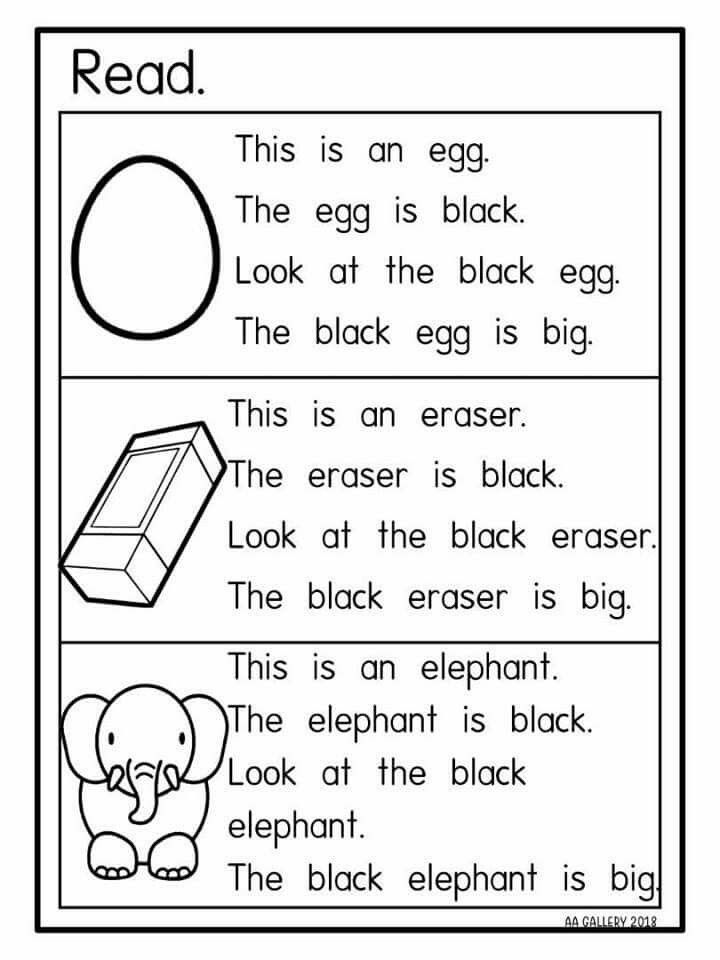 32 841.92] /Contents 140 0 R /group> /Tabs /S /StructParents 41 >> endobj 49 0 obj > /ExtGState> /ProcSet [/PDF /Text /ImageB /ImageC /ImageI] >> /MediaBox[0 0 595.32 841.92] /Contents 141 0 R /group> /Tabs /S /StructParents 42 >> endobj 50 0 obj > /ExtGState> /ProcSet [/PDF /Text /ImageB /ImageC /ImageI] >> /MediaBox [0 0 595.32 841.92] /Contents 142 0 R /group> /Tabs /S /StructParents 43 >> endobj 51 0 obj > /ExtGState> /ProcSet [/PDF /Text /ImageB /ImageC /ImageI] >> /MediaBox [0 0 595.32 841.92] /Contents 143 0 R /group> /Tabs /S /StructParents 44 >> endobj 52 0 obj > /ExtGState> /ProcSet [/PDF /Text /ImageB /ImageC /ImageI] >> /MediaBox[0 0 595.32 841.92] /Contents 144 0 R /group> /Tabs /S /StructParents 45 >> endobj 53 0 obj > /ExtGState> /ProcSet [/PDF /Text /ImageB /ImageC /ImageI] >> /MediaBox [0 0 595.32 841.92] /Contents 145 0 R /group> /Tabs /S /StructParents 46 >> endobj 54 0 obj > /ExtGState> /ProcSet [/PDF /Text /ImageB /ImageC /ImageI] >> /MediaBox [0 0 595.32 841.92] /Contents 146 0 R /group> /Tabs /S /StructParents 47 >> endobj 55 0 obj > /ExtGState> /ProcSet [/PDF /Text /ImageB /ImageC /ImageI] >> /MediaBox[0 0 595.
32 841.92] /Contents 140 0 R /group> /Tabs /S /StructParents 41 >> endobj 49 0 obj > /ExtGState> /ProcSet [/PDF /Text /ImageB /ImageC /ImageI] >> /MediaBox[0 0 595.32 841.92] /Contents 141 0 R /group> /Tabs /S /StructParents 42 >> endobj 50 0 obj > /ExtGState> /ProcSet [/PDF /Text /ImageB /ImageC /ImageI] >> /MediaBox [0 0 595.32 841.92] /Contents 142 0 R /group> /Tabs /S /StructParents 43 >> endobj 51 0 obj > /ExtGState> /ProcSet [/PDF /Text /ImageB /ImageC /ImageI] >> /MediaBox [0 0 595.32 841.92] /Contents 143 0 R /group> /Tabs /S /StructParents 44 >> endobj 52 0 obj > /ExtGState> /ProcSet [/PDF /Text /ImageB /ImageC /ImageI] >> /MediaBox[0 0 595.32 841.92] /Contents 144 0 R /group> /Tabs /S /StructParents 45 >> endobj 53 0 obj > /ExtGState> /ProcSet [/PDF /Text /ImageB /ImageC /ImageI] >> /MediaBox [0 0 595.32 841.92] /Contents 145 0 R /group> /Tabs /S /StructParents 46 >> endobj 54 0 obj > /ExtGState> /ProcSet [/PDF /Text /ImageB /ImageC /ImageI] >> /MediaBox [0 0 595.32 841.92] /Contents 146 0 R /group> /Tabs /S /StructParents 47 >> endobj 55 0 obj > /ExtGState> /ProcSet [/PDF /Text /ImageB /ImageC /ImageI] >> /MediaBox[0 0 595.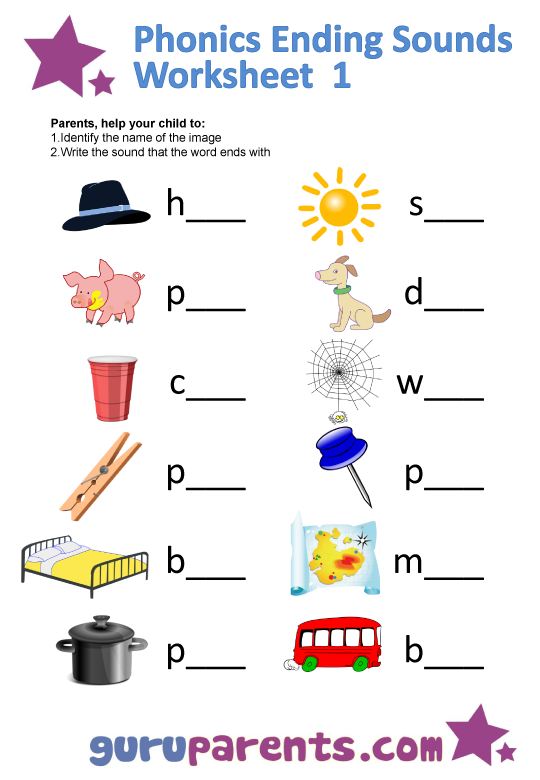 32 841.92] /Contents 147 0R /group> /Tabs /S /StructParents 48 >> endobj 56 0 obj > /ExtGState> /ProcSet [/PDF /Text /ImageB /ImageC /ImageI] >> /MediaBox [0 0 595.32 841.92] /Contents 148 0R /group> /Tabs /S /StructParents 49 >> endobj 57 0 obj > /ExtGState> /ProcSet [/PDF /Text /ImageB /ImageC /ImageI] >> /MediaBox [0 0 595.32 841.92] /Contents 149 0R /group> /Tabs /S /StructParents 50 >> endobj 58 0 obj > /ExtGState> /ProcSet [/PDF /Text /ImageB /ImageC /ImageI] >> /MediaBox[0 0 595.32 841.92] /Contents 151 0 R /group> /Tabs /S /StructParents 51 >> endobj 59 0 obj > /ExtGState> /ProcSet [/PDF /Text /ImageB /ImageC /ImageI] >> /MediaBox [0 0 595.32 841.92] /Contents 153 0R /group> /Tabs /S /StructParents 52 >> endobj 60 0 obj > /ExtGState> /ProcSet [/PDF /Text /ImageB /ImageC /ImageI] >> /MediaBox [0 0 595.32 841.92] /Contents 154 0R /group> /Tabs /S /StructParents 53 >> endobj 61 0 obj > /ExtGState> /ProcSet [/PDF /Text /ImageB /ImageC /ImageI] >> /MediaBox[0 0 595.32 841.92] /Contents 155 0 R /group> /Tabs /S /StructParents 54 >> endobj 62 0 obj > /ExtGState> /ProcSet [/PDF /Text /ImageB /ImageC /ImageI] >> /MediaBox [0 0 595.
32 841.92] /Contents 147 0R /group> /Tabs /S /StructParents 48 >> endobj 56 0 obj > /ExtGState> /ProcSet [/PDF /Text /ImageB /ImageC /ImageI] >> /MediaBox [0 0 595.32 841.92] /Contents 148 0R /group> /Tabs /S /StructParents 49 >> endobj 57 0 obj > /ExtGState> /ProcSet [/PDF /Text /ImageB /ImageC /ImageI] >> /MediaBox [0 0 595.32 841.92] /Contents 149 0R /group> /Tabs /S /StructParents 50 >> endobj 58 0 obj > /ExtGState> /ProcSet [/PDF /Text /ImageB /ImageC /ImageI] >> /MediaBox[0 0 595.32 841.92] /Contents 151 0 R /group> /Tabs /S /StructParents 51 >> endobj 59 0 obj > /ExtGState> /ProcSet [/PDF /Text /ImageB /ImageC /ImageI] >> /MediaBox [0 0 595.32 841.92] /Contents 153 0R /group> /Tabs /S /StructParents 52 >> endobj 60 0 obj > /ExtGState> /ProcSet [/PDF /Text /ImageB /ImageC /ImageI] >> /MediaBox [0 0 595.32 841.92] /Contents 154 0R /group> /Tabs /S /StructParents 53 >> endobj 61 0 obj > /ExtGState> /ProcSet [/PDF /Text /ImageB /ImageC /ImageI] >> /MediaBox[0 0 595.32 841.92] /Contents 155 0 R /group> /Tabs /S /StructParents 54 >> endobj 62 0 obj > /ExtGState> /ProcSet [/PDF /Text /ImageB /ImageC /ImageI] >> /MediaBox [0 0 595.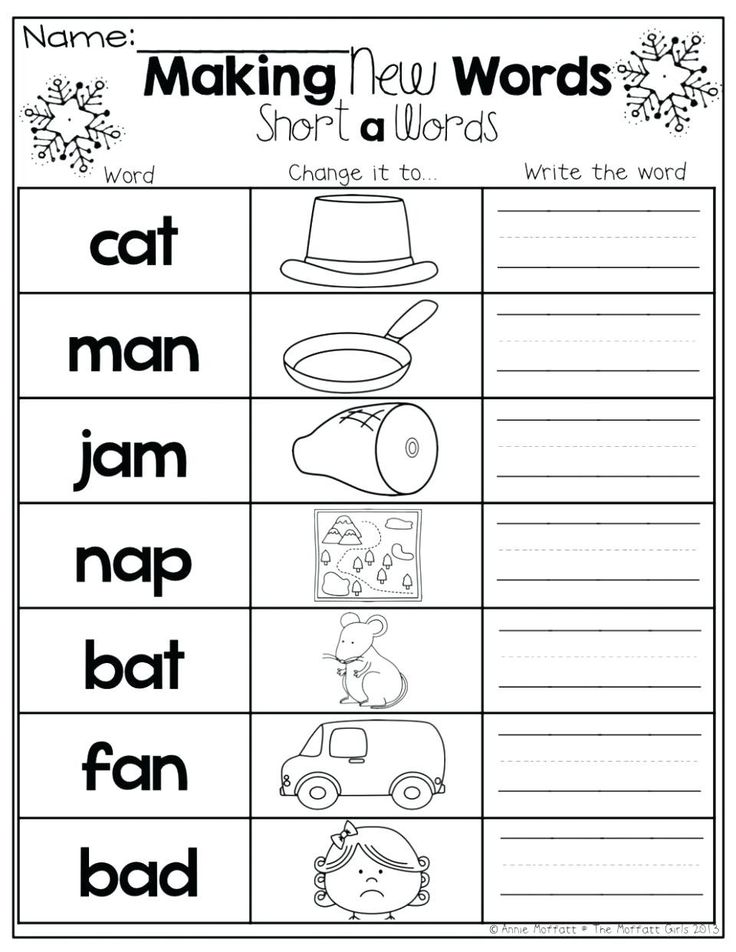 32 841.92] /Contents 156 0 R /group> /Tabs /S /StructParents 55 >> endobj 63 0 obj > /ExtGState> /Font> /ProcSet [/PDF /Text /ImageB /ImageC /ImageI] >> /MediaBox [0 0 841.92 595.32] /Contents 158 0 R /group> /Tabs /S /StructParents 56 >> endobj 64 0 obj > /ExtGState> /XObject> /ProcSet [/PDF /Text /ImageB /ImageC /ImageI] >> /MediaBox[0 0 841.92 595.32] /Contents 160 0R /group> /Tabs /S /StructParents 57 >> endobj 65 0 obj > /ExtGState> /ProcSet [/PDF /Text /ImageB /ImageC /ImageI] >> /MediaBox [0 0 595.32 841.92] /Contents 161 0R /group> /Tabs /S /StructParents 58 >> endobj 66 0 obj > /ExtGState> /ProcSet [/PDF /Text /ImageB /ImageC /ImageI] >> /MediaBox [0 0 595.32 841.92] /Contents 162 0 R /group> /Tabs /S /StructParents 59 >> endobj 67 0 obj > /ExtGState> /ProcSet [/PDF /Text /ImageB /ImageC /ImageI] >> /MediaBox[0 0 595.32 841.92] /Contents 163 0R /group> /Tabs /S /StructParents 60 >> endobj 68 0 obj > /ExtGState> /ProcSet [/PDF /Text /ImageB /ImageC /ImageI] >> /MediaBox [0 0 595.
32 841.92] /Contents 156 0 R /group> /Tabs /S /StructParents 55 >> endobj 63 0 obj > /ExtGState> /Font> /ProcSet [/PDF /Text /ImageB /ImageC /ImageI] >> /MediaBox [0 0 841.92 595.32] /Contents 158 0 R /group> /Tabs /S /StructParents 56 >> endobj 64 0 obj > /ExtGState> /XObject> /ProcSet [/PDF /Text /ImageB /ImageC /ImageI] >> /MediaBox[0 0 841.92 595.32] /Contents 160 0R /group> /Tabs /S /StructParents 57 >> endobj 65 0 obj > /ExtGState> /ProcSet [/PDF /Text /ImageB /ImageC /ImageI] >> /MediaBox [0 0 595.32 841.92] /Contents 161 0R /group> /Tabs /S /StructParents 58 >> endobj 66 0 obj > /ExtGState> /ProcSet [/PDF /Text /ImageB /ImageC /ImageI] >> /MediaBox [0 0 595.32 841.92] /Contents 162 0 R /group> /Tabs /S /StructParents 59 >> endobj 67 0 obj > /ExtGState> /ProcSet [/PDF /Text /ImageB /ImageC /ImageI] >> /MediaBox[0 0 595.32 841.92] /Contents 163 0R /group> /Tabs /S /StructParents 60 >> endobj 68 0 obj > /ExtGState> /ProcSet [/PDF /Text /ImageB /ImageC /ImageI] >> /MediaBox [0 0 595. 32 841.92] /Contents 164 0 R /group> /Tabs /S /StructParents 61 >> endobj 69 0 obj > /ExtGState> /ProcSet [/PDF /Text /ImageB /ImageC /ImageI] >> /MediaBox [0 0 595.32 841.92] /Contents 165 0R /group> /Tabs /S /StructParents 62 >> endobj 70 0 obj > /ExtGState> /ProcSet [/PDF /Text /ImageB /ImageC /ImageI] >> /MediaBox[0 0 595.32 841.92] /Contents 166 0 R /group> /Tabs /S /StructParents 63 >> endobj 71 0 obj > /ExtGState> /ProcSet [/PDF /Text /ImageB /ImageC /ImageI] >> /MediaBox [0 0 595.32 841.92] /Contents 167 0R /group> /Tabs /S /StructParents 64 >> endobj 72 0 obj > /ExtGState> /ProcSet [/PDF /Text /ImageB /ImageC /ImageI] >> /MediaBox [0 0 595.32 841.92] /Contents 168 0 R /group> /Tabs /S /StructParents 65 >> endobj 73 0 obj > /ExtGState> /ProcSet [/PDF /Text /ImageB /ImageC /ImageI] >> /MediaBox[0 0 595.32 841.92] /Contents 169 0 R /group> /Tabs /S /StructParents 66 >> endobj 74 0 obj > /ExtGState> /ProcSet [/PDF /Text /ImageB /ImageC /ImageI] >> /MediaBox [0 0 595.32 841.92] /Contents 170 0 R /group> /Tabs /S /StructParents 67 >> endobj 75 0 obj > /ExtGState> /ProcSet [/PDF /Text /ImageB /ImageC /ImageI] >> /MediaBox [0 0 595.
32 841.92] /Contents 164 0 R /group> /Tabs /S /StructParents 61 >> endobj 69 0 obj > /ExtGState> /ProcSet [/PDF /Text /ImageB /ImageC /ImageI] >> /MediaBox [0 0 595.32 841.92] /Contents 165 0R /group> /Tabs /S /StructParents 62 >> endobj 70 0 obj > /ExtGState> /ProcSet [/PDF /Text /ImageB /ImageC /ImageI] >> /MediaBox[0 0 595.32 841.92] /Contents 166 0 R /group> /Tabs /S /StructParents 63 >> endobj 71 0 obj > /ExtGState> /ProcSet [/PDF /Text /ImageB /ImageC /ImageI] >> /MediaBox [0 0 595.32 841.92] /Contents 167 0R /group> /Tabs /S /StructParents 64 >> endobj 72 0 obj > /ExtGState> /ProcSet [/PDF /Text /ImageB /ImageC /ImageI] >> /MediaBox [0 0 595.32 841.92] /Contents 168 0 R /group> /Tabs /S /StructParents 65 >> endobj 73 0 obj > /ExtGState> /ProcSet [/PDF /Text /ImageB /ImageC /ImageI] >> /MediaBox[0 0 595.32 841.92] /Contents 169 0 R /group> /Tabs /S /StructParents 66 >> endobj 74 0 obj > /ExtGState> /ProcSet [/PDF /Text /ImageB /ImageC /ImageI] >> /MediaBox [0 0 595.32 841.92] /Contents 170 0 R /group> /Tabs /S /StructParents 67 >> endobj 75 0 obj > /ExtGState> /ProcSet [/PDF /Text /ImageB /ImageC /ImageI] >> /MediaBox [0 0 595.